Women Psychoanalysts in Eastern Europe
Geschichte
Franziska Baumgarten (1883-1970)
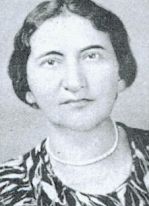
The psychologist Franziska (Franciszka) Baumgarten, born in Russian-Polish Łódź as the daughter of a Jewish textile manufacturer, is best known as a pioneer of psychotechnics. Although probably without formal training in psychoanalysis, she was one of the first to introduce Freudianism in Poland. In 1905, she began studies in literature, philosophy, and psychology in Kraków. A year later, she moved to Paris to study philosophy, physics and chemistry until 1907. In 1908, she went to Zürich, where she completed her doctorate in 1910/1911 on Die Erkenntnislehre von Maine de Biran. In the same year she was introduced to experimental psychology by Oswald Külpe in Bonn and in 1911 she moved on to Berlin to become a pupil of the Harvard professor Hugo Münsterberg, the founder of psychotechnics.
From 1911 to 1914, Franziska Baumgarten lived in Łódź and gave lectures on psychotechnics and psychoanalysis. In 1912, she published an extensive article on Sigmund Freud’s Traumdeutung in the journal Neurologia Polska. At the beginning of World War I, she moved to Berlin, where she spent her most productive scientific period, from 1914 to 1924. During this time, she participated in job fitness assessments and was a member of the commission for testing espcially gifted pupils in the Belin schools until 1924. Her research on Applied Psychology was influenced by Édouard Claparède, the founder of the Cercle psychanalytique Genevois and the International Psychotechnical Association, of which Franziska Baumgarten became a board member in 1922.
In 1924, she moved to Switzerland to marry the child psychiatrist Moritz Tramer (1882-1963), director of the Heil- und Pflegeanstalt Rosegg in Solothurn. In 1929, she earned her habilitation in the Faculty of Philosophy and History at the University of Bern, where she lectured on psychotechnics and work psychology from 1930 until her retirement in 1954. She designed several personality tests, including a proverb test for work attitude measurement. Her most important publications include the standard work Die Berufseignungsprüfungen (1928) and Die Psychologie der Menschenbehandlung im Betrieb (1930).
Despite progressive hearing loss and an eye condition, Franziska Baumgarten-Tramer remained active until shortly before her death. She died poor in a hospital in Bern. (Top of the article)
- SELECTED WORKS
- Die Erkenntnislehre von Maine de Biran. Eine historische Studie. Diss. Zürich 1910/11; Krakau 1911
- Teoria snu Freuda [Die Traumtheorie Freuds]. Neurologia Polska 2, 1912, 1013-1062
- Die Lüge bei Kindern und Jugendlichen. Ergebnis einer Umfrage in den polnischen Schulen von Lodz. Leipzig 1917
- Die psycho-analytische Bewegung. Praktische Psychologie 1, 1920, 185-193
- Arbeitswissenschaft und Psychotechnik in Russland. München u. a. 1924
- Die Berufseignung der Völker. Leipzig 1927
- Die Berufseignungsprüfungen. Theorie und Praxis. München 1928
- Wunderkinder. Psychologische Untersuchngen. Leipzig 1930
- Die Psychologie der Menschenbehandlung im Betrieb. In F. Giese (ed.): Handbuch der Arbeitswissenschaft, Bd. V, Teil 3. Halle 1930, 1-78
- Soziale Seiten der Psychotechnik. Jena 1931
- Die Arbeit des Menschen. Burgdorf 1940
- Die Charakterprüfung der Berufsanwärter. Zürich 1941
- Die Psychologie im kaufmännischen Berufe. Zürich 1943
- Beratung in Lebenskonflikten. Zürich 1943
- Demokratie und Charakter. Zürich 1944
- Das Heldentum der Akademikerinnen im Kriege. Burgdorf 1950
- A proverb test for attitude measurement. Personnel Psychology 5 (4), 1952, 249-375
- Die evokativen Tests, insbesondere der Sprüchetest. In E. Stern und F. Baumgarten-Tramer: Die Tests in der klinischen Psychologie. Zürich 1954
- Die Regulierungskräfte im Seelenleben. München 1954
- Seelische Not und Vorurteil. Einblick in verworrene menschliche Beziehungen. Freiburg 1961
- Zur Geschichte der angewandten Psychologie in der Schweiz. Münsingen 1961
- Janusz Korczak - der polnische Pestalozzi. Düsseldorf 1965
- REFERENCES
- Daub, Edelgard: Franziska Baumgarten. Eine Frau zwischen akademischer und praktischer Psychologie. Frankfurt/M. 1996
- Dybel, Pawel: Unterbrochene Wege. Zur Geschichte der Psychoanalyse in Polen. Psyche 53 (11), 1999, 1160-1187
- Historisches Lexikon der Schweiz (2021-01-28)
- Walter-Busch, Emil: Streitbare Pionierin der angewandten Psychologie in der Schweiz: Franziska Baumgarten. In ders.: Faktor Mensch. Formen angewandter Sozialforschung der Wirtschaft in Europa und den USA, 1890- 1950. Konstanz 2006, 292-298
- Whonamedit? (2012-03-30)
- Wikipedia: deutsch; englisch (2025-04-16)
- PHOTO: Orphan work from Nachlass Franziska Baumgarten, Schweizerisches Literaturarchiv Bern
Maja Beck-Dvoržak (1919-1996)
Maja Beck-Dvoržak, born in Sisak, Croatia, was the pioneer of child psychiatry in Croatia. She completed her medical studies in Zagreb in 1947. Subsequently, she specialised in neurology and child psychiatry in Zagreb and Paris. In 1961, she received her doctorate in Zagreb with a dissertation on character changes in epileptic children. After earning her habilitation in 1965, she taught medical psychology in the Department of Psychiatry with Medical Psychology and Mental Hygiene [Katedre za psihijatriju s medicinskom psihologijom i mentalnom higijenom] at the University of Zagreb until her retirement in 1977.
Another area of professional activity for Maja Beck-Dvoržak was the Neuropsychiatric Clinic at the University of Zagreb, where she taught since 1954 in the Department of Psychotherapy [Psihoterapijski odjel Neuropsihijatrijske klinike], which was founded by Stjepan Betlheim. Betlheim was a pioneer of psychoanalysis in Croatia, and Maja Beck-Dvoržak was among his closest collaborators - along with Duška Blažević, Neda Bućan and Eugenija Cividini-Stranić. She received her psychoanalytic training from him and adopted a psychoanalytic approach in child psychiatry.
In 1957, Maja Beck-Dvoržak founded the Division of Child Psychiatry and Psychotherapy and the first psychiatric-psychotherapeutic outpatient clinic for children and adolescents within the Neuropsychiatric Clinic. She was also part of the team at the psychoanalytically oriented Center for Mental Health in Zagreb, where she headed the Department of Child and Adolescent Psychiatry [Psihijatrijskog odjela za djecu i omladinu u Centru za mentalno zdravlje]. (Top of the article)
- SELECTED WORKS
- La Salpetriere. Pismo iz Pariza. Neuropsihijatrija 3 (3-4), 1955, 261-263
- Child psychiatry in Paris. Neuropsihijatrija 6 (1-4), 1958, 233–239 [Dječja psihijatrija u Parizu. Psihoterapija 20 (2), 1990, 135-142]
- Dječja psihijatrija [Kinderpsychiatrie]. In R. Lopašić, S. Betlheim and S. Dogan (eds): Psihijatrija. Belgrad; Zagreb 1959, 303-330
- Udio utjecaja okoline na promjene karaktera epileptične djece. Med. Diss. Zagreb 1961
- Einem vierjährigen Mädchen stirbt die Großmutter. In G. Biermann (ed.): Handbuch der Kinderpsychotherapie, Bd. IV. München 1981 [Četverogodišnjoj djevojčici iznenada umire baka. Psihoterapija 20 (2), 1990, 131-134]
- Medicinska psihologija djeteta. In D. Mardešić (ed.): Pedijatrija. Zagreb 1984
- (with Stjepan Betlheim, Duška Blažević and Neda Bućan) Neuroze i njihovo liječenje. Belgrad; Zagreb 1963
- (and Neda Bućan) In memoriam Dr Stjepan Betlheim (1898-1970). Liječnički Vjesnik 93 (3), 1971, 395–396
- (and Milica Vlatkovic-Prpic) Deutungen in der analytisch orientierten Spieltherapie. In G. Biermann (ed.) : Handbuch der Kinderpsychotherapie. Ergänzungsband. München 1976
- (with Duška Blažević and Eugenija Cividini-Stranić) Medicinska psihologija. Zagreb 1979
- (with Dragan Pavelić, Duška Blažević and Eugenija Cividini-Stranić) Psihodinamski pristup neurotskom karakteru. Zagreb 1980
- REFERENCES
- Cividini-Stranić, Eugenija, et al.: La psicoanalisi in Jugoslavia. In A. M. Accerboni (ed.): La Cultura psicoanalitica. Atti di Convegno Trieste 5-8 dicembre 1985. Pordenone 1987, 49-60
- Savelli, Mat: The Peculiar Prosperity of Psychoanalysis in Socialist Yugoslavia. The Slavonic and East European Review 91 (2), 2013, 262-288
- Švab, Mladen: Beck-Dvoržak, Maja. Hrvatski biografski leksikon (1983–2024), mrežno izdanje. Leksikografski zavod Miroslav Krleža, 2024 (2024-09-06)
- Socijalna psihijatrija 50 (2), 2022 (2023-07-14)
- Vincent, Michel: Yougoslavie (ex-). In Dictionnaire international de la psychanalyse (2002). Ed. by A. de Mijolla. Paris 2005, 1923-1925 [International Dictionary of Psychoanalysis. Detroit u. a. 2005, 1884-1885]
Marie Benová née Mrázková (1908-1987)
The Czech psychologist and psychoanalyst Marie Benová studied philosophy and psychology in Prague, completing her studies with a doctoral degree. In the 1930s, she trained as a psychoanalyst with the Prague Psychoanalytic Study Group. Her training analysis began with Emanuel Windholz and continued with Jan Frank and Steff Bornstein. Her supervisors were Ladislav Haas, Otakar Kučera, and Theodor Dosužkov.
After World War II, Dosužkov founded the Society for the Study of Psychoanalysis in Prague in 1946. Marie Benová, who lectured pedagogy at the Charles University, was among the few female members of this IPA-recognised study group, which was dissolved in 1952 - four years after the communist takeover. As psychoanalysis was condemned as bourgeois and decadent in the Czechoslovak Socialist Republic, the remaining members of the group continued psychoanalytic training in private settings. Benová’s public lecture on psychoanalytic ideas about child development, held in 1967, was published in the collected volume Prague Lectures on Psychoanalysis, Part I, the entire print run of which was subsequently destroyed.
In the 1970s, Marie Benová joined the group of IPA-recognised training analysts - Dosužkov, Kučera, and Haas - and became a direct member of the IPA in 1978. After the suppression of the Prague Spring in 1968, Dosužkov, Kučera, Marie Benová, Pavel Tautermann, Alena Žižková, and Zdeněk Mrazek continued to train the next generation of analysts unofficially. In the early 1980s, their students organised the Česká Psychoanalytická Společnost (Czech Psychoanalytical Society).
Marie Benová was married to the neuropathologist and occupational physiologist Eduard Bena (1899–1976), with whom she had three children. (Top of the article)
- SELECTED WORKS
- K psychologii pohádky. In J. Červenka (ed.): Sborník statí a článků o pohádkách. Prag 1960, 227-241
- Child development in the sense of psychoanalysis (Czech). In J. Cvekl et al. (eds): Pražské přednášky o psychoanalýze. Díl I [Prague Lectures on Psychoanalysis, Part I]. Prag 1968
- REFERENCES
- Borecký, Miroslav: Czech Republic, and Psychoanalysis. In E. Erwin (ed.): The Freud Encyclopedia. Theory, Therapy, and Culture. New York; London 2002, 136-138
- Čermáková, Halina: Vzpomínky na psychoanalýzu v době totality. Rev psychoanal Psychoter 18 (2), 2016, 99-106
- Fischer, Eugenia: Czechoslovakia. In P. Kutter (ed.): Psychoanalysis International, Bd. 1. Stuttgart-Bad Cannstatt 1992, 34-49
- Jakubu, Jirí: Eine Rose ist eine Rose ist eine Rose. Zdenek Mrázek, Hana Junová und das Phänomen Lobec - Horní Palata. Luzifer-Amor 35 (70), 2022, 119–144
- Junek, Petr: K etice psychoanalytické techniky (1996). Ceská psychoanalytická spolecnost (2024-05-07)
- MyHeritage: Marie Benová (geb. Mrázková) 13.1.1908-28.9.1987 (2024-05-10)
- Šebek, Michael: Psychoanalysis in Czechoslovakia. Psychoanal Rev 80, 1993, 433-439
- Svobodný, Petr: Bena Eduard 16.5.1899-11.4.1976. Biografický slovník (2024-05-10)
Berta Bers née Weinberg (1889-1976)
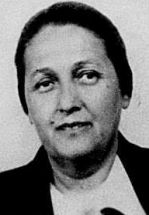
Berta (Bertha) Basja Bers (also Bērs, Bērzs, Berz) was born in Riga - then part of the Russian Empire - as the daughter of Rabbi Lipman Yontef Vaynberg (Weinberg). Bertha Weinberg attended a private girls' high school in Riga until 1906, then went on to study in Kharkiv. In 1909, she transferred to St. Petersburg, where she studied at the historical-philological department of Bestuzhev's College, that was a Branch for Women of the Petersburg University.
She married the mining engineer Isaac Bers (Īzaks Berss) (1886–1970), who studied at the Polytechnic Institute in St. Petersburg. In 1914, their son Lipman Bers - later a renowned mathematician - was born. After completing her studies, Berta Bers returned with her family at the end of 1918 to Riga, which by then had become part of independent Latvia. Berta and Isaac Bers were members of the Bund, a Jewish socialist organisation, and were involved in promoting the Jewish secular education. From 1919 to 1931, Berta Bers was the director of the secular Yiddish-language elementary school in Riga, while Isaac Bers headed the affiliated high school. They divorced in 1926.
In the 1920s, Berta Bers probably attended - like Feiga Kramer - the lectures held by the Swiss educator and psychoanalyst Ernst Schneider at the University of Latvia in Riga, continuing until 1928. In 1925/26, she went to Berlin to begin psychoanalytic training at the Berlin Psychoanalytic Institute under the Freudo-Marxist Otto Fenichel, continuing her studies in 1931/32 with Karen Horney. She also participated in the meetings of the pedagogical study group led by Siegfried Bernfeld. In 1932, she presented a paper there on a case of adolescent love, discussing a fifteen-year-old boy’s infatuation with his schoolmistress and the educational challenges it posed. After Hitler’s rise to power, she continued to have her case studies supervised by Fenichel, who had emigrated to Oslo and later to Prague.
From 1932 to 1934, Berta Bers taught at a school for children with developmental delays. Together with Feiga Kramer, she attempted to establish a psychoanalytic circle in Riga, supported by Fenichel during his visits. However, these efforts failed after Kārlis Ulmanis’s coup in 1934. Under his dictatorship, psychoanalysis was discredited, all Jewish political organisations were banned, and Yiddish-language schools were closed. Berta Bers was suspended from teaching. In 1936, as a guest of the Prague Psychoanalytic Study Group, she gave a lecture on the challenges of a child analysis involving organic complications.
In the late 1930s, she married actor and film producer Boris Tumarin (1910–1979) and emigrated with him to New York in 1939. Bertha “Basja” Tumarin began a psychoanalytic practice and taught psychology at the New York Institute for Jewish Research, as well as psychotherapy at Hunter College. From 1952, she was a member-at-large of the International Psychoanalytical Association (IPA). (Top of the article)
- SELECTED LECTURES
- Pubertätsliebe. Pädagogische Arbeitsgemeinschaft (BPI), 27.5.1932 und 24.6.1932
- Schwierigkeiten einer Kinderanalyse mit organischen Komplikationen. Psychoanalytická skupina v Č.S.R. Prag, 16.4.1936
- REFERENCES
- Alnæs, Randolf: Otto Fenichel und Wilhelm Reich in Oslo. Die norwegische Psychoanalyse in der Zwischenkriegszeit. Jb Psychoanal 37, 1996, 206-247
- Brod, Ivar: Bertha Tumarin. Psychoanalyst, educator, public activist. The Latvian Jewish Courier 30 (3), 2016, 10 (2022-01-06)
- Bull Int Psycho-Anal Assn 34, 1953, 87
- Fenichel, Otto: 119 Rundbriefe (1934-1945). Hg. von E. Mühlleitner und J. Reichmayr. Frankfurt/Main; Basel 1998
- Geni (2022-01-06)
- Keen, Linda, Irwin Kra and Rubí E. Rodríguez (eds): Lipman Bers, a Life in Mathematics. American Mathematical Society, Providence 2015
- Kloocke, Ruth, und Elke Mühlleitner: Lehren oder lernen? Siegfried Bernfeld und die "Pädagogische Arbeitsgemeinschaft" am Berliner Psychoanalytischen Institut. Luzifer-Amor 17 (34), 2004, 35-58
- Mühlleitner, Elke: Ich - Fenichel. Das Leben eines Psychoanalytikers im 20. Jahrhundert. Wien 2008
- Schröter, Michael: 129 dokumentierte Ausbildungskandidaten am Berliner Psychoanalytischen Institut 1924-1932. Tabelle. Luzifer-Amor 33 (66), 2020 + pdf (2022-01-06)
- Šuvajevs, Igors: Psihoanalīzes pēdas Latvijā [Spuren der Psychoanalyse in Lettland]. Riga 2012
- Wikipedia: Īzaks Ābrams Berss; Lipman Bers (2022-01-06)
- Zigmunde, Alīda: Der Psychoanalytiker und Pädagoge Ernst Schneider (1878–1957) im Widerstreit der Meinungen seiner Zeitgenossen in Lettland (1920–1928). Humanitārās un Sociālās Zinātnes Nr. 27, 2017, 80-92
- PHOTO: New York, U.S. District and Circuit Court Naturalization Records, 1824-1991. National Archives at New York (FamilySearch 2023-03-15)
Duška Blažević (1920-1981)

The Yugoslav neuropsychiatrist Duška Blažević was born in Sarajevo and completed her medical studies in Zagreb in 1944. During the German occupation of Yugoslavia, she was active in the resistance. After the war, from 1947 to 1951, she specialised in neurology at the Neuropsychiatric Clinic of the University of Zagreb's School of Medicine. There, she became a close collaborator of Stjepan Betlheim - the pioneer of psychoanalysis in Croatia - at the Department of Psychotherapy, founded by Betlheim in 1953 [Psihoterapijski odjel Neuropsihijatrijske klinike]. Since no psychoanalytic association was permitted in socialist Yugoslavia, Betlheim conducted training analyses during the 1950s and 1960s as a direct IPA member with his closest colleagues, including Maja Beck-Dvoržak, Duška Blažević, Neda Bućan, Eugenija Cividini-Stranić, and Eduard Klain.
In 1962, Duška Blažević was appointed associate professor, and in 1969, full professor at the Department of Psychotherapy. That same year, under her leadership, the Center for Mental Health [Centar za mentalno zdravlje] was founded. It played a key role in the development of psychoanalytic psychotherapy in both theory and practice. From 1969 to 1980, she headed the Center, continuing Betlheim’s legacy after his death in 1970. Blažević conducted analyses with her colleagues, including Staniša Nikolić, who introduced the technique of analytic psychodrama in Zagreb. In 1971, together with Eduard Klain, she co-founded the psychoanalytically oriented journal Psihoterapija, serving as editor-in-chief until her death.
Duška Blažević-Pepčić was married to journalist Martin Pepčić (1913–2006), a longtime editor at Radio Zagreb. (Top of the article)
- SELECTED WORKS
- Lijecenje neurotika sa simptomima straha grupnom psihoterapijom [Behandlung von Angstneurosen mit Gruppenpsychotherapie]. Neuropsihijatrija 4 (2), 1956, 99–116
- Specifičnosti završne faze psihoterapije [Besonderheiten der letzten Phase einer Psychotherapie]. Med. Diss. Zagreb 1975
- (und Stjepan Betlheim) Grupna psihoterapija. Neuropsihijatrija 1 (4), 1953, 268–282
- (und Stjepan Betlheim) Über die Übertragungssituation in einer offenen Gruppe psychisch Impotenter. Acta Psychotherapeutica, Psychosomatica et Orthopaedagogica 3 (1), 1955, 3-12
- (mit Stjepan Betlheim et al.) Neuroze i njihovo liječenje [Neurosen und ihre Behandlung]. Belgrad; Zagreb 1963
- (und Vladimir Hudolin) Mentalna higijena i psihijatrija s neurologijom [Psychohygiene und Neuropsychiatrie]. Belgrad; Zagreb 1967
- (mit Eugenija Cividini-Stranić, Eduard Klain, Staniša Nikolić und Neda Bućan) Dinamska psihologija i psihoterapija [Dynamische Psychologie und Psychotherapie]. Zagreb 1975
- (mit Eugenija Cividini-Stranić und Maja Beck-Dvoržak) Medicinska psihologija [Medizinische Psychologie]. Zagreb 1979
- REFERENCES
- Billion Graves (2023-02-22)
- Cividini-Stranić, Eugenija: In memoriam prof. dr Duška Blažević. Psihoterapija 11 (2), 1981, 113–114.
- Dugački, Vladimir: Blažević, Duška (1989). In Hrvatski biografski leksikon (2023-01-17)
- Hrvatska enciklopedija (2025-04-18)
- Klain, Eduard: Croatia. In Peter Kutter (ed.); Psychoanalysis International, Bd. 2. Stuttgart-Bad Cannstatt 1992, 269-276
- Leksikon Hrvatske radiotelevizije: Pepčić, Martin (2023-02-22)
- Savelli, Mat: "Peace and happiness await us". Psychotherapy in Yugoslavia, 1945–85. History of the Human Sciences 31 (4), 2018, 38-57
- Socijalna psihijatrija 50 (2), 2022 (2023-07-14)
- Vincent, Michel: Yougoslavie (ex-). In Dictionnaire international de la psychanalyse (2002). Ed. by A. de Mijolla. Paris 2005, 1923-1925 [International Dictionary of Psychoanalysis. Detroit u. a. 2005, 1884-1885]
- PHOTO: Courtesy of the National Library of Medicine (2023-03-07)
Elżbieta Bohomolec
Elżbieta Małgorzata Bohomolec, one of the first certified psychoanalysts in Poland, earned her doctorate in 1985/86 at the Faculty of Medicine of the University of Warsaw and specialised in psychiatry. She underwent analysis in Warsaw with Polish psychoanalyst Michal Lapinski, who had been trained in Prague, and completed a control analysis in Berlin. At the Congress of the International Psychoanalytical Association (IPA) in 1989 in Rome, Elżbieta Bohomolec and Katarzyna Walewska became direct members of the IPA.
In the early 1990s, Elżbieta Bohomolec co-founded and headed the Polskie Towarzystwo Rozwoju Psychoanalizy (PTRP) [Polish Association for the Development of Psychoanalysis], which, in 1997, evolved into the IPA-recognised Polskie Towarzystwo Psychoanalityczne (PTPa) [Polish Psychoanalytical Society]. She is a training analyst of the PTPa and practices as a psychiatrist in Warsaw.
Elżbieta Bohomolec is a member of the International Editorial Board of the American Journal of Psychotherapy and contributed to the Polish translations of Erna Furman's Helping Young Children Grow (Jak wspierać dziecko w rozwoju) and Edna O'Shaughnessy's Inquiries in Psychoanalysis (Psychoanalityczne dociekania). (Top of the article)
- SELECTED WORKS
- Proces separacji i indywiduacji. Nowiny Psychologiczne Nr. 5, 1988, 102-109
- Terapia psychoanalityczna głębszych zaburzeń osobowości. In M. Sokolik (ed.): Problemy współczesnej psychoanalizy. Warschau 1992
- Lęk w myśleniu psychoanalitycznym – wybrane zagadnienia. Postępy Psychiatrii i Neurologii 3 (1), 1994, 19-28
- Pacjent narcystyczny - obrona przed związkiem. Świat Psychoanalizy Nr. 2, 1995, 131-142
- REFERENCES
- Diatkine, Gilbert, et al.: L’Europe orientale. In G. Diatkine et al. (eds): La Psychanalyse et l'Europe de 1993. Paris 1993, 99-136
- Dybel, Pavel: Die Psychoanalyse - ein gelobtes Land? Zur Kulturgeschichte der psychoanalytischen Bewegung in Polen. Psyche 68 (3), 2014, 216-247
- Groth, Jaroslaw: Eugenia Sokolnicka. A contribution to the history of psychoanalysis in Poland and France. Psychoanal Hist 17, 2015, 59-86
- Medycyna Dydaktya Wychowanie. Kwartalnik Akademii Medycznej w Warszawie 9 (1-4), 1987 (2024-05-15)
- Pawlak, Krzysztof, et al.: Poland. In P. Kutter (ed.): Psychoanalysis International, Bd. 1. Stuttgart-Bad Cannstatt 1992, 243-250
- Sedlak, Victor, et al.: The development of psychoanalysis in Poland. EPF Bulletin 50, 1997
Lenina Bondarenko (*1937)
The Ukrainian philosopher and psychoanalyst Lenina Ivanovna Bondarenko studied philosophy at Lomonosov University in Moscow in the 1950s, graduating in 1959. In 1974, she earned a PhD from the A. M. Gorky State University in Kharkiv, where she began teaching philosophy as an associate professor in 1977.
During the 1970s and 1980s, Lenina Bondarenko dealt mainly with the development of consciousness and logical thinking. After Perestroika and Ukraine’s independence, she, like other faculty members at the Kharkiv Department of Philosophy, shifted her focus toward the promotion of psychoanalysis and the history of the national psychoanalytic movement. Together with her students A. Bashenov and S. Taglin, Bondarenko published a collection of Russian translations of psychoanalytic texts in 1991.
In the early 1990s, Lenina Ivanovna Bondarenko was involved in establishing the Kharkiv Regional Psychoanalytic Society [Харьковское Областное Психоаналитическое Общество (ХОПО)], which was officially founded in 1995. She was also a presidium member of the Moscow Interregional Psychoanalytical Association [Московская Межрегиональная Психоаналитическая Ассоциация], founded in 1995 by Pavel S. Gurevich and others. She co-authored a history of psychoanalysis in Ukraine (1996) and wrote numerous articles on Freudianism, Neo-Freudianism, and the Analytical Psychology of C. G. Jung.
The “Kharkiv group” of Bondarenko’s students viewed C. G. Jung as a religious moderniser - God understood as the collective unconscious - and a forerunner of a new spiritual path. Lenina Bondarenko expressed similar ideas in a symposium contribution she co-authored with Larisa Rese in 1991, titled Карл Юнг о духовности [Carl Jung on spirituality]. (Top of the article)
- SELECTED WORKS
- О соотношении материальной и идеальной деятельности в их историческом и индивидуальном становлении [On the Ratio of Material and Ideal Activity in their Historical and Individual Formation]. Phil. Diss. Charkiw 1974
- Основные этапы становления сознания (логическое и историческое в генезисе сознания) [The main stages of the formation of consciousness (The Logical and the Historical in the Genesis of Consciousness)]. Kiew 1979
- У истоков логического мышления [Origins of Logical Thinking]. Moskau 1985
- (with С.А.Таглин and A.B. Баженов) (eds) Психоанализ и культурология [(with S.A.Taglin and A.B. Baschenow) (eds) Psychoanalysis and Cultural Studies]. Charkiw 1991
- (and Лариса Резе) Карл Юнг о духовности [(and Larisa Rese) Carl Jung on spirituality]. Contribution to the symposium "Дух и космос: культура и наука на пути к нетрадиционному миропониманию“ [Spirit and Cosmos: Culture and Science on the Path to a Nontraditional Worldview]. University of Kharkiv, September 1992
- (with И.И. Кутько and П.Т. Петрюк) История психоанализа в Украине [(with I.I. Kutko and P.T. Petrjuk) The History of Psychoanalysis in Ukraine]. Charkiw 1996
- REFERENCES
- Менжулин, Вадим Игоревич: Расколдовывая Юнга. От апологетики к критике [Menschulin, Wadim Igorewitsch: Disenchant Jung. From Apologetics to Criticism]. Kiew 2002 (2025-03-27)
- Овчаренко, Виктор И.: Российские Психоаналитики [Owtscharenko, Viktor:: Russian Psychoanalysts]. Russia 2000 (2025-03-27)
- Романов, Игорь Юрьевич, and Виталий Николаевич Лысогор: Первые шаги Харьковского областного психоаналитического общества [Romanow, Igor Jurjewitsch, and Witalij Nikolaewitsch Lysogor: The First Steps of the Kharkiv Regional Psychoanalytic Society]. Kharkiv Psychoanalytic Society (ХОП) (2025-03-27)
Therese Bondy née Stein (1908-1941)
Therese (Terezie) "Resa" (Réza) Bondy was born in Bavorovice (Baurowitz, now in the Czech Republic). In 1932, while attending the 5th International Congress for Sexual Reform on the Basis of Sexual Science in Brno, she met the Czech psychiatrist and sexologist Hugo Bondy (1897-1939). They married in 1933 and had two children: Helena and Jan Leopold.
Resa Bondy was a guest member of the Prague Psychoanalytic Study Group, which from 1935 was led by Otto Fenichel. Like her husband, she contributed to Ota Friedmann’s Czech translation of Sigmund Freud’s Vier Psychoanalytische Krankengeschichten, published in Prague in 1936 under the title Psychoanalytike Chorobopisy. After the "Anschluss" of Austria in 1938 and the German invasion of Czechoslovakia in March 1939, most members of the Prague study group fled the country and went into exile. Child psychoanalyst Dr. Therese Bondy was among the few who remained in Prague, along with Theodor Dosužkov, Steff Bornstein, Otto Brief, and Marie Brief.
Although Hugo Bondy officially applied for emigration, he committed suicide in Prague in 1939. On October 16, 1941, Therese Bondy and her children were deported on one of the first Jewish transports from Prague to Łódź, and from there to Auschwitz. According to Miroslav Borecký of the Česká Psychoanalytická Společnost, Theresa Bondyová was murdered in Auschwitz in 1941. (Top of the article)
- REFERENCES
- Benveniste, Daniel: Emanuel Windholz - The institute builder (Juli 1994). International Psychoanalysis (29.6.2020)
- Borecky, Miroslav: Czech Republic, and psychoanalysis. In E. Erwin (ed.): The Freud Encyclopedia. Theory, Therapy, and Culture. New York; London 2002, 136-138
- Borecky, Miroslav: Ceská psychoanalýza (1999). Česká Psychoanalytická Spolecnost (2012 - in the meantime deleted)
- Dosužkov, Theodor: Die Psychoanalytische Bewegung in der Tschechoslowakei während des Krieges. Luzifer-Amor 35 (70), 2022, 38-40
- Fischer, Eugenia: Czechoslovakia. In P. Kutter (ed.): Psychoanalysis International, Bd. 1. Stuttgart-Bad Cannstatt 1992, 34-49
- Giefer, Michael: Die Entwicklung der Psychoanalyse in der Tschechoslowakei von den Anfängen bis 1939. Luzifer-Amor 34 (68), 2021, 7-26
- Hermanns, Ludger M.: The Prague Psychoanalytic Study Group 1934-1938: Frances Deri, Annie Reich, Theodor Dozushkov, and Heinrich Löwenfeld. Contribution to a panel at the IPAC in Prag, 2013
- holocaust.cz (7.2.2018)
- Kitlitschko, Susanne (Reporter): The Prague Psychoanalytic Study Group 1933-1938: Frances Deri, Annie Reich, Theodor Dosužkov, and Heinrich Löwenfeld, and their contributions to psychoanalysis. IJP 94, 2013, 1196-1198 (IPAC Panel Report, Prag 2013) + pdf (23.2.2015)
- Mühlleitner, Elke: Ich - Fenichel. Das Leben eines Psychoanalytikers im 20. Jahrhundert. Wien 2008
- Seidl, Jan: Homosexualita v praxi a diskurzu trestního práva, medicíny a obcanské spolecnosti od vydání trestního zákona z roku 1852 do prijetí trestního zákona z roku 1961. Phil. Diss. Prag 2012
- Vondrácek, Vladimír: Konec vzpomínání. (1938-1945). Prag 1988
- Wikipedia: Hugo Bondy (23.2.2023)
Steff Bornstein (1893-1939)
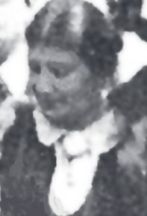
Child psychoanalyst Stefanie (Steff) Bornstein was born on March 12, 1893*, in Krakau as the eldest daughter of the Jewish merchants Getzel and Gisella Bornstein. Shortly after the birth of her younger sister, Berta Bornstein, the family settled in Berlin. Steff Bornstein worked as a bookseller,, headed a children's convalescent home, and presumably trained as a kindergarten teacher at the Pestalozzi-Fröbel-Haus in Berlin by 1926.
Like her sister, she began training at the Berlin Psychoanalytic Institute (BPI) in the early 1920s. From 1924 to 1930, Steff Bornstein underwent training analysis with Josine Müller-Ebsen. She became an associate member of the Deutsche Psychoanalytische Gesellschaft in 1930 and a full member in 1932. From 1931 to 1932, she regularly participated in the meetings of the Pädagogische Arbeitsgemeinschaft, led by Siegfried Bernfeld at the BPI, where she presented her paper Die Psychologie des Erziehers, discussing the case of a neurotic educator.
In addition, she taught from 1932 to 1933 at the Social Institute of the Verein Jugendheim in Charlottenburg. In 1933, she took over the introductory seminar for educators at the BPI and, together with Jeanne Lampl-de Groot, also led the advanced seminar. During this period, she published several articles, including an interpretation of the Sleeping Beauty motif, which she viewed as expressing fear of menstruation and defloration, and a mother who forbids sexuality.
After Hitler’s rise to power, Steff Bornstein emigrated to Prague in 1933. Together with Frances Deri, Annie Reich, and others, she helped organise the Prague Psychoanalytic Study Group [Psychoanalytická skupina v Č.S.R.], which became affiliated with the Wiener Psychoanalytische Vereinigung (WPV) in 1934. That same year, she was accepted as a full member of the WPV. Alongside Otto Fenichel and Annie Reich, she served as a training and supervising analyst for the Prague group. Among her analysands was Ota Friedmann, the Czech translator of Sigmund Freud.
Specialised in child analysis, Steff Bornstein developed the psychoanalytic-pedagogical training program within the Prague Psychoanalytic Study Group. Her seminars on child analysis for kindergarten teachers and educators were highly sought after. She also gave public lectures on topics such as child-rearing, childhood disorders, and infantile sexuality. In 1937, she spoke at the Vierländertagung in Budapest on misunderstandings in psychoanalytic pedagogy, identifying fear of a child’s negative emotions as one of its typical errors.
In 1935 and 1936, Steff Bornstein sought to extend her residence permit in Prague. To obtain Czechoslovak citizenship, she entered into a marriage of convenience in 1936 with Czech-Jewish psychoanalyst Emanuel Windholz. While Windholz emigrated to the USA in 1938, Steff Bornstein-Windholzová remained in Prague even after the German invasion of Czechoslovakia and served as the last chairperson of the Prague Study Group. She may have attempted to emigrate to the USA; however, she was seriously ill and died of a heart attack in Prague in 1939. (Top of the article)
- *Archiv der Polizeidirektion Prag 1931-1940, Signatur B 2397/16, Karte 4859 (Ludwig-Körner 1999, 84)
- SELECTED WORKS
- Zum Problem der narzißtischen Identifizierung. IZP 16, 1930, 400-416
- Traueransprache zum Tod von Josine Ebsen. In M. Eitingon et al.: Josine Müller zum Gedächtnis. Berlin 1931, 22-26
- Eine Kinderanalyse. Z psa Päd 7, 1933, 253-281 [A child analysis. Psa Quart 4, 1935, 190-225]
- Ein Beitrag zur Psychoanalyse des Pädagogen. Z psa Päd 7, 1933, 314-321
- Das Märchen von Dornröschen in psychoanalytischer Darstellung. Imago 19, 1933, 505-517
- Eine Technik der Kinderanalyse bei Kindern mit Lernhemmungen. Z psa Päd 8, 1934, 141-154
- Unbewußtes der Eltern in der Erziehung der Kinder. Z psa Päd 8, 1934, 353-362; Reprint in G. Bittner und W. Rehm (eds): Psychoanalyse und Erziehung: Ausgewählte Beiträge aus der Zeitschrift für psychoanalytische Pädagogik. Stuttgart 1964
- Mißverständnisse in der psychoanalytischen Pädagogik. Z psa Päd 11 (2), 1937, 81-101; Reprint in Bittner/Rehm 1964, 75-85
- REFERENCES
- Benveniste, Daniel: Emanuel Windholz - The institute builder (Juli 1994). International Psychoanalysis (2020-06-29)
- Giefer, Michael: Die Entwicklung der Psychoanalyse in der Tschechoslowakei von den Anfängen bis 1939. Luzifer-Amor 34 (68), 2021, 7-26
- Hoffer, Wilhelm: Nachruf Steff Bornstein-Windholzowa. IZP 24 (4), 1939, 491
- Karpe, Richard: Prager Brief. Z psa Päd 8, 1934, 274
- Ludwig-Körner, Christiane: Wiederentdeckt - Psychoanalytikerinnen in Berlin. Gießen 1999; 2014
- Mühlleitner, Elke: Biographisches Lexikon der Psychoanalyse. Die Mitglieder der Psychologischen Mittwoch-Gesellschaft und der Wiener Psychoanalytischen Vereinigung (1902-1938). Tübingen 1992
- Mühlleitner, Elke: Steff Bornstein, Otto Fenichel und die psychoanalytisch-pädagogische Ausbildung der Psychoanalytischen Arbeitsgemeinschaft v. Č.S.R. (1933-1939). Luzifer-Amor 13 (25), 2000, 64-77
- Mühlleitner, Elke: Ich - Fenichel. Das Leben eines Psychoanalytikers im 20. Jahrhundert. Wien 2008
- Schröter, Michael: Psychoanalyse im Fortbildungsangebot für Sozialberufe, Berlin 1930-1933 (Verein Jugendheim). Luzifer-Amor 18 (35), 2005, 46-81
- Schröter, Michael: 129 dokumentierte Ausbildungskandidaten am Berliner Psychoanalytischen Institut 1924-1932: Tabelle. Luzifer-Amor 33 (66), 2020 (2020-12-09)
- Šebek, Michael: Wer war der Psychoanalytiker Emanuel Windholz (1903–1986)? Luzifer-Amor 34 (68), 2021, 27-52
- PHOTO: Giefer 2021, 15 (detail). Courtesy of Michael Giefer
Marie Brief née Fischer (1906-1944)
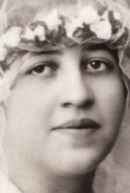
Marie Brief was born in Olmutz in Austria-Hungary (today Olomouc in the Czech Republic) as the eldest daughter of Joseph and Martha Fischer. She worked as a kindergarten educator and was married to the Jewish physician and psychoanalyst Otto Brief (1891-1942), with whom she had two children: Vera (b. 1928) and Felix (b. 1929). In the 1930s, she and Otto Brief, whose training analyst had been Wilhelm Reich, were guest members of the Prague Psychoanalytic Study Group led by Otto Fenichel.
After Wilhelm Reich and Stefi Pedersen, who knew Marie Brief personally, emigrated to Oslo following Hitler's rise to power in 1933, Otto and Marie Brief also planned to emigrate to Norway or the United States. However, their attempt was unsuccessful. When the German Wehrmacht occupied Czechoslovakia, Otto Brief was arrested by the Prague State Police in 1939. He was deported first to the Sachsenhausen concentration camp, then in 1940 to Dachau, and in 1941 to the Buchenwald concentration camp, where he formed a psychoanalytic discussion group with Ernst Federn and Bruno Bettelheim. In October 1941, Otto Brief was transferred to Auschwitz, where he died in December 1942.
Marie Brief and her childfren left Olmutz before March 1, 1940, probably for Prague. They were deported from Prague to the Theresienstadt Ghetto on September 4, 1942. On October 6, 1944, they were transferred to Auschwitz and were immediately sent to the gas chambers. (Top of the article)
- REFERENCES
- Borecky, Miroslav: Czech Republic, and psychoanalysis. In E. Erwin (ed.): The Freud Encyclopedia. Theory, Therapy, and Culture. New York; London 2002, 136-138
- Fischer, Eugenia: Czechoslovakia. In P. Kutter (ed.): Psychoanalysis International, Bd.1. Stuttgart-Bad Cannstatt 1992, 34-49
- Geni (2015-12-04)
- Federn, Ernst: Ein Leben mit der Psychoanalyse. Von Wien über Buchenwald und die USA zurück nach Wien. Gießen 1999
- Kunstreich, Tjark: Remembering Dr. Otto Brief. In V. Blüml, L. Giorgi und D. Huppert (eds): Contemporary Perspectives on the Freudian Death Drive. In Theory, Clinical Practise and Culture. London; New York 2019
- Mühlleitner, Elke: Ich - Fenichel. Das Leben eines Psychoanalytikers im 20. Jahrhundert. Wien 2008
- Müller, Thomas: Von Charlottenburg zum Central Park West. Henry Lowenfeld und die Psychoanalyse in Berlin, Prag, New York. Frankfurt/M. 2000
- Yad Vashem: Marie Brief (2024-09-10)
- Yad Vashem: Otto Brief (2024-09-10)
- PHOTO: Yad Vashem
Neda Bućan (1925-2003)
The Yugoslav child psychiatrist and psychoanalyst Neda Bućan was born in Zagreb as the youngest daughter of Petar Bućan and Nika née Mijoč. She received her psychoanalytic training in the 1950s and 1960s under Stjepan Betlheim, the pioneer of Croatian psychoanalysis. In 1967, she went to the United States to study at the National Institute of Mental Health in Bethesda, near Washington, and to train as a family psychotherapist at the Mental Research Institute in Palo Alto.
In 1971, she returned to Zagreb, where - like Maja Beck-Dvoržak, Duška Blažević and Eugenija Cividini-Stranić - she became part of the team at the psychoanalytically oriented Center for Mental Health [Centar za mentalno zdravlje], which was renamed the Department of Psychological Medicine [Klinika za psihološku medicinu] in 1988. She was initially influenced by the systemic family therapy approach of the Palo Alto group, as also the Italian psychoanalyst Mara Selvini Palazzoli. Later she preferred group-analytic concepts of family therapy.
Neda Bućan Maletić was married to the psychiatrist Aleksandar Maletić, a graduate of the William Alanson White Institute in New York and a proponent of Neo-Freudianism. They both trained several generations of students in family psychotherapy in Croatia, including child psychiatrists Staniša Nikolić and Vesna Vidović. (Top of the article)
- SELECTED WORKS
- (with Stjepan Betlheim, Duška Blažević and Maja Beck-Dvoržak) Neuroze i njihovo liječenje [Neurosen und ihre Behandlung]. Belgrad; Zagreb 1963
- (and Maja Beck-Dvoržak) In memoriam Dr Stjepan Betlheim (1898-1970). Liječnički Vjesnik 93 (3), 1971, 395–396
- (with Duška Blažević, Eugenija Cividini-Stranić, Eduard Klain and Staniša Nikolić) Dinamska psihologija i psihoterapija. Zagreb 1975
- REFERENCES
- Bujas-Petković, Zorana: Povijesni osvrt na razvoj obiteljske terapije [Historischer Überblick über die Entwicklung der Familientherapie]. In M. Marangunić, S. Nikolić, V. Vidović, Z. Bujas-Petković: Obitelj - Podrška mentalnom zdravlju pojedinca. Zagreb 2008 + pdf (2023-02-16)
- Cividini-Stranić, Eugenija, et al.: La psicoanalisi in Jugoslavia. In A. M. Accerboni (ed.): La Cultura psicoanalitica. Atti di Convegno Trieste 5-8 dicembre 1985. Pordenone 1987, 49-60
- Geni (2023-02-15)
- Klain, Eduard: Croatia. In Peter Kutter (ed.); Psychoanalysis International, Bd. 2. Stuttgart-Bad Cannstatt 1992, 269-276
- Kulenović, Muradif: Neda Bućan ili ego psihologija. Psihoterapija 21 (1-2), 1991, 191-196
- Matić, Jasnica Klara: Where I gained the practical experience in the field of behavioral psychology that I used in my book. LinkedIn, 2.5.2020 (2023-02-16)
- Savelli, Mat: "Peace and happiness await us". Psychotherapy in Yugoslavia, 1945–85. History of the Human Sciences 31 (4), 2018, 38-57
- Socijalna psihijatrija 50 (2), 2022 (2023-07-14)
Eugenija Cividini-Stranić (1928-2011)
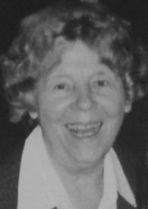
The Yugoslav neuropsychiatrist Eugenija Cividini-Stranić was born in Belgrade. After completing her medical studies in 1953, she worked at the Vrapče Psychiatric Clinic and finished her specialisation in neuropsychiatry in 1958. In 1959, she began working in the Department of Psychotherapy at the Neuropsychiatric Clinic of the University of Zagreb [Psihoterapijski odjel Neuropsihijatrijske klinike], which was led by Stjepan Betlheim, the pioneer of Croatian psychoanalysis. Since psychoanalytic associations were not permitted in socialist Yugoslavia, Betlheim, as a direct member of the IPA, conducted training analyses with his closest collaborators from the late 1950s onward. Among them were Maja Beck-Dvoržak, Duška Blažević, Neda Bućan, Eugenija Cividini-Stranić, and Eduard Klain, all of whom continued Betlheim’s work in Croatia after his death.
In 1965, Eugenija Cividini-Stranić earned her doctorate in Zagreb with a dissertation on graphism and the treatment of writer’s cramp. She taught at the Center for Mental Health [Centar za mentalno zdravlje], which emerged in 1969 from the Department of Psychotherapy, and played a central role in training and practicing psychoanalytic psychotherapy. From 1971, she lectured Medical Psychology at the Department of Psychiatry with Medical Psychology and Mental Hygiene [Katedre za psihijatriju s medicinskom psihologijom i mentalnom higijenom] at the University of Zagreb. In 1980, she succeeded Duška Blažević as head of the Center for Mental Health, a position she held until her retirement in 1987.
Eugenija Cividini-Stranić had a particular interest in group analysis originated by S. H. Foulkes. In 1977, she initiated the first workshop on this technique in Zagreb at the Center for Mental Health. She served as president of the Psychotherapy Section of the Croatian Medical Association and, after the death of Duška Blažević in 1981, became editor-in-chief of the psychoanalytically oriented journal Psihoterapija. Since 1999, she had been a direct member of the IPA. (Top of the article)
- SELECTED WORKS
- Patodinamika grafizma i liječenje grafospazma. Med. Diss. Zagreb 1965
- Gdje je danas grupna analiza? Psihoterapija 6 (2), 1976, 217–225
- Our first workshop in Zagreb, Yugoslavia. Group Analysis 11 (1), 1978, 78–81
- Destruktivna agresija u psihoterapiji psihosomatskih poremećaja / Destructive aggression in psychotherapy of psychosomatic disturbances (1986). Psihoterapija 30 (1), 2016, 17-26 (Reprint)
- (und Eduard Klain) Kontratransfer i interakcije u grupnoj psihoterapiji [Countertransference and interactions in group psychotheraphy]. Neuropsihijatrija 14 (1), 1966, 109-117
- (mit Duška Blažević, Eduard Klain, Staniša Nikolić und Neda Bućan) Dinamska psihologija i psihoterapija [Dynamische Psychologie und Psychotherapie]. Zagreb 1975
- (with Duška Blažević snd Maja Beck-Dvoržak) Medicinska psihologija [Medizinische Psychologie]. Zagreb 1979
- (and Eduard Klain) Grupna analiza i/ili psihoanaliza [Gruppenanalyse und/oder Psychoanalyse]. Psihijatrija Danas 11 (1), 1979, 101–112
- (and Eduard Klain) The development of group psychotherapy in Yugoslavia. Group 9 (4), 1985, 51-54
- (et al.) La psicoanalisi in Jugoslavia. In A. M. Accerboni (ed.): La Cultura psicoanalitica. Atti di Convegno Trieste 5-8 dicembre 1985. Pordenone 1987, 49-60
- REFERENCES
- Bull Int Psycho-Anal Assn 81, 2000, 410
- Dugački, Vladimir: Cividini-Stranić, Eugenija (1989). In Hrvatski biografski leksikon (2023-01-29)
- Klain, Eduard: Croatia. In Peter Kutter (ed.); Psychoanalysis International, Bd. 2. Stuttgart-Bad Cannstatt 1992, 269-276
- Socijalna psihijatrija 50 (2), 2022 (2023-07-14)
- Vincent, Michel: Yougoslavie (ex-). In Dictionnaire international de la psychanalyse (2002). Ed. by A. de Mijolla. Paris 2005, 1923-1925 [International Dictionary of Psychoanalysis. Detroit u. a. 2005, 1884-1885]
- PHOTO: Psihoterapija 30 (1), 2016, 17 (2023-02-24)
Michalina Fabian Roth née Endelmann (1900-1969)
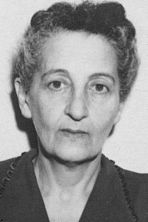
Michalina "Micea" Endelman(n) was born in Warsaw, her parents, Sigmund Endelmann and Frieda Lurie, were of Jewish origin. She studied medicine in Berlin, Vienna, and Paris, earned her medical doctorate in Berlin in 1926, and specialised in psychiatry at the Karl-Bonhoeffer-Nervenklinik. Simultaneously, she trained at the Berlin Psychoanalytic Institute, with Otto Fenichel as her training analyst.
After separating from her first husband, the Polish painter, graphic artist, and set designer Marcel Slodki (1892–1943), she married the Berlin-born dentist Ewald Fabian (1885–1944) in 1928. In 1931, their son Thomas was born. Fabian, a founding member of the Sozialistische Arbeiterpartei Deutschland and secretary of the Verein sozialistischer Ärzte, co-edited the journal Der sozialistische Arzt with Ernst Simmel.
When Hitler came to power in 1933, the Fabians emigrated to Prague. Michalina Fabian joined the Prague Psychoanalytic Study Group and resumed her psychoanalytic training with Otto Fenichel in 1935. Following the occupation of Czechoslovakia by the German Wehrmacht in 1939, the family fled first to Paris. Ewald Fabian continued his escape to the United States, and Michalina Fabian followed him to New York in 1940 with their son.
In New York, Michalina Fabian worked at Hillside Hospital before serving from 1944 to 1949 as a psychiatrist and training analyst at the Menninger Clinic in Topeka. Then she established a private psychoanalytic practice in New York. After Ewald Fabian's death, she married Berlin-born artist and designer Harry Roth (Rothziegel) (1903–1976). In 1952, she returned to the Menninger Clinic in Topeka, where she held various positions within the Topeka Psychoanalytic Society and was elected its president in 1964. In addition she served as a consultant and lecturer for several institutions, including the Medical School of the University of Albany and the Chicago Medical School.
In 1968, the Roths moved to Woodstock, New York, where Michalina Roth died of liver cancer a year later. (Top of the article)
- SELECTED WORKS
- [Slodki-Endelman, Michalina] Einfluß der meteorologischen Faktoren auf die Mortalität und Morbidität der Erkältungskrankheiten. Med. Diss. Berlin 1926
- A research evaluation of psychotherapy at the Menninger Clinic. Lecture at the Asociacion Psicoanalítica Mexicana 1957/58 (IJP 40, 1959, 257)
- REFERENCES
- Balán, Jorge: Cuentame tu vida. Una biografia colectiva del psicoanálisis argentino. Buenos Aires 1991
- Bull Am Psychoanal Assn 20:1964, 871
- Falk, Peter Hastings (ed.): Who Was Who in American Art, 1564-1975. 400 years of artists in America, Bd. 3. Madison, Wis. 1999
- Geni (2022-06-28)
- Knapp, Hanna: Avantgarde und Psychoanalyse in Spanien. José Ortega y Gasset, Salvador Dalí, Rosa Chacel und ihre Rezeption der Theorien Sigmund Freuds. Hamburg 2008
- Menninger, Karl: In memoriam Michalina Fabian Roth, M.D. (1900-1969). Bull Menninger Clin 34 (1), 1970, 31-32
- Müller, Thomas: Von Charlottenburg zum Central Park West. Henry Lowenfeld und die Psychoanalyse in Berlin, Prag, New York. Frankfurt/M. 2000
- Schröter, Michael: 129 dokumentierte Ausbildungskandidaten am Berliner Psychoanalytischen Institut 1924-1932: Tabelle. Luzifer-Amor 33 (66), 2020 (2020-12-01)
- Wikipedia: Marcel Slodki; Ewald Fabian (2022-06-28)
- PHOTO: Brasil, Cartões de Imigração, 1900-1965. Arquivo Nacional, Rio de Janeiro (FamilySearch 2022-06-28)
Věra Fischelová née Vlková (1931-2020)
The Czech psychiatrist and psychoanalyst Věra Fischelová was born in Prague. Her father was a technician and entrepreneur, her mother a social worker. Věra Fischelová studied medicine at Charles University in Prague in the 1950s and then specialised as a psychiatrist. In the 1960s, she began psychoanalytic training, which had to take place privately, as psychoanalysis was banned in Czechoslovakia at the time. She attended seminars led by Theodor Dosužkov and underwent analysis with Ladislav Haas and Otakar Kučera.
During the Prague Spring of 1968, Věra Fischelová worked for several months in a psychiatric hospital in Vienna but returned to Prague with her eight-year-old son Dominik after the occupation of Czechoslovakia by Warsaw Pact troops. In the years that followed, she worked as a psychiatrist and headed the Department for Neuroses at the Prague Psychiatric Research Institute [Výzkumný ústav psychiatrický]. As a psychoanalyst, she had to practice in secret, official recognition became possible only after the Velvet Revolution in 1989.
Since 1989, Věra Fischelová was a direct member of the International Psychoanalytical Association and in 1990 became one of the founding members of the Czech Psychoanalytical Society [Česká psychoanalytická společnost, ČPS]. She was a training and supervising analyst of the ČPS and maintained a private practice in psychoanalysis and psychiatry in Prague. (Top of the article)
- SELECTED WORKS
- Na objednávku o sobě [Über mich selbst]. Rev Psychoanal Psychoter 13 (2), 2011, 81-83
- (and T. Dostal) Vztah zivotních událostí k psychickým i somatickým onemocnĕním [Lebensereignisse und psychische und somatische Erkrankungen]. Ceskoslovenska psychiatrie 75 (2), 1979, 128-134
- (and Jiří Šimek) Zkusenosti s lécením psychosomatických nemocých ve skupinové psychoterapii [Erfahrungen mit der Gruppenpsychotherapie bei psychosomatischen Patienten]. Ceskoslovenska psychiatrie 77 (6), 1981, 407-413
- REFERENCES
- Coudenhove-Kalergi, Barbara: Zuhause ist überall. Erinnerungen. Wien 2013
- Fischelová, Věra: Na objednávku o sobě [Über mich selbst]. Rev Psychoanal Psychoter 13 (2), 2011, 81-83
- Generace české psychoanalýzy (2023-12-15)
- Höschl, Cyril: PLB a PCP - harmonický pár v nejlepších letech. Bohnice 8 (7/8), 2009 (2020-08-28)
- Holub, David: Dr. Otakar Kučera (1906–1980). »Psychoanalytiker, sei das Salz der Erde!«. Luzfer-Amor 34 (68), 2021, 70-87
- Nationalbibliothek der Tschechischen Republik
- Rys, Eduard: Ladislav Haas – Ich baue hier wieder meine Insel… Luzifer Amor 35 (70), 2022, 67-88
- Sebek, Michael: Psychoanalyse in Tschechien. Äußere Realität und Verdrängung. Psyche 67 (3), 2013, 238-250
Eugenia Fischer née Dosužkov (*1935)
Eugenia Fischer was born in Prague-Bohnice as the youngest daughter of Theodor (Bohodar) Dosužkov and Věra Dorofejeva Dosužkova. Following the October Revolution, her parents had emigrated from Russia in 1920 and settled in Prague, where they worked as specialists in neurology and psychiatry. The family survived the Nazi Protectorate era from 1939 to 1945 by successfully keeping their Jewish roots a secret. Theodor Dosužkov was a member of the Prague Psychoanalytic Study Group and of the Society for the Study of Psychoanalysis, which he reestablished after the end of the war.
Eugenia Dosužková studied medicine at Charles University in Prague from 1953 until she earned her doctorate in 1959. From 1961 to 1964, she did her residency at the university’s psychiatric clinic, where she continued working as a junior physician until 1969. She was part of the unofficial psychoanalytic study group led by her father and began training analysis with Ladislav Haas in 1963, which she continued with Otakar Kučera after Haas emigrated in 1965.
In 1963, she separated from her first husband, Petr Lom, with whom she had two children, Martin and Katerina. Three years later, she married her colleague, psychiatrist and psychoanalyst René Fischer (1932-2023), in 1968 their son Philipp was born. Following the suppression of the Prague Spring by Warsaw Pact troops, Eugenia and René Fischer succeeded in emigrating to West Berlin with their three children in 1969.
In the 1970s, Eugenia Fischer completed psychoanalytic training at the Sigmund Freud Institute in Frankfurt. In 1972, she established a private practice as a specialist in psychiatry, psychotherapy, and psychoanalysis in Liederbach, near Frankfurt. From 1985 to 2002, she was affiliated with the Institut für Analytische Kinder- und Jugendlichen-Psychotherapie in Frankfurt, serving for many years as a member of its training committee. In 1999, she co-founded the Institut für Analytische Kinder- und Jugendlichen-Psychotherapie at the Mainzer Psychoanalytisches Institut (MPI) and served as its chair until 2006. She is a member of the Deutsche Psychoanalytische Vereinigung (DPV) and an honorary member of the Czech Psychoanalytic Society, founded in 1990.
Eugenia Fischer has published several works - mostly in collaboration with René Fischer - on the history of psychoanalysis in Czechoslovakia and Russia. (Top of the article)
- SELECTED WORKS
- Geschichte der Psychoanalyse in der Tschechoslowakei. Sigmund Freud House Bulletin 14 (1), 1990, 34-44
- Czechoslovakia. In P. Kutter (ed.): Psychoanalysis International, Bd. 1. Stuttgart-Bad 1992, 34-49
- Leben und Werk von Nikolaj Jegrafowitsch Ossipow. Luzifer-Amor 8 (16), 1995, 77-86
- MUDr Theodor (Bohodar) Dosužkov. Rev Psychoanal Psychoter 9, 2007, 71-74
- Theodor (Bohodar) Dosužkov. Luzifer-Amor 34 (68), 2021, 54-69
- (and René Fischer) Psychoanalyse in Rußland. In Die Psychologie des 20. Jahrhunderts III: Freud und die Folgen (2). Zürich 1977, 122-124
- (and René Fischer) Geschichte der Psychoanalyse in Rußland. Z psychoanal Theorie Praxis 11, 1996, 357-374
- (and René Fischer) Russia (after the ending of dictatorship). In P. Kutter (ed.): Psychoanalysis International, Bd. 2: America, Asia, Australia. Further European countries. Stuttgart-Bad Cannstatt 1995, 345-350
- (und René Fischer) Nikolaj J. Ossipow. Le premier émigré politique dans l'histoire de la psychanalyse et sa correspondance avec Sigmund Freud pendant son exil à Prague. Topique Nr. 80, 2002, 117-123
- (and René Fischer) Dosuzkov, Theodor. In Dictionnaire international de la psychanalyse (2002). Ed. by A. de Mijolla. Paris 2005, 495f [International Dictionary of Psychoanalysis. Detroit u. a. 2005, 432-433]
- (mit René Fischer und Hans-Heinrich Otto) Von der Rhein-Main-Neckar-Gruppe über die Frankfurter Psychoanalytische Vereinigung zum Frankfurter Psychoanalytischen Institut. Eine Chronologie. In T. Plänkers et al. (eds): Psychoanalyse in Frankfurt. Tübingen 1996, 450-460
- (et al.) (eds): Sigmund Freud und Nikolaj J. Ossipow: Briefwechsel 1921-1929. Frankfurt/M. 2009
- REFERENCES
- Borecky, Miroslav: Czech Republic, and psychoanalysis. In E. Erwin (ed.): The Freud Encyclopedia. Theory, Therapy, and Culture. New York; London 2002, 136-138
- FAZ, Februar 2023: Traueranzeigen René Fischer (2023-02-23)
- Fischer, Eugenia: Czechoslovakia. In P. Kutter (ed.): Psychoanalysis International, Bd. 1. Stuttgart-Bad Cannstatt 1992, 34-49
- Fischer, Eugenia: "Falls das Institut auf dem Mond gewesen wäre, hätten wir es auch dahin geschafft". Mein Leben und Wirken in zwei Systemen. In L. M. Hermanns (ed.): Psychoanalyse in Selbstdarstellungen, Bd. XIV. Frankfurt/M. 2023, 11-32
- Holub, David: Dr. Otakar Kučera (1906–1980). Luzifer-Amor 34 (68), 2021, 70-87
- Plänkers, Thomas, et al. (eds): Psychoanalyse in Frankfurt am Main. Zerstörte Anfänge - Wiederannäherung - Entwicklungen. Tübingen 1996
- Rev psychoanal psychoter 2007, 80: O autorech
- Sebek, Michael: Von Freiberg bis zum Prager Frühling. Die Entwicklung der Psychoanalyse in der Tschechoslowakei. In C. Tögel und J. Frommer (eds): Psychotherapie und Psychoanalyse in Osteuropa. Uchtspringe 2003, 87-96 + pdf (2015-11-17)
Elisabeth Gerö-Heymann (1903-2009)

Elisabeth (Liselotte) "Lilo" Heymann, the daughter of the Jewish obstetrician Felix Heymann, was born in Berlin, where she spent her childhood and youth. In 1919, she followed her older brother to study in Heidelberg. Due to homesickness, she returned to Berlin after just one semester and then went on to study social work. In Berlin she met her husband, the Hungarian-born physician and psychologist György (Georg) Gerö (1901-1993), who just underwent psychoanalytic training at the Berlin Institute. Before they married in 1930, Gerö insisted that she entered in analysis as well. The marriage failed, but Elisabeth Gerö-Heymann had found her calling
Shortly before Hitler's rise to power, she began training analysis with Frances Deri in Berlin. Like Deri, she emigrated to Prague in 1933, where she helped establish the Prague Psychoanalytic Study Group. Georg Gerö, meanwhile, followed Wilhelm Reich to Scandinavia. When Frances Deri emigrated to the United States in 1936, Lilo Gerö-Heymann continued her training analysis with the Freud-Marxist Otto Fenichel, who had taken over leadership of the Prague Study Group in 1935. After presenting a case analysis and a paper on Das Ich und die Abwehrmechanismen von Anna Freud, she practiced as a psychoanalyst in Prague until its occupation by the Nazis in 1939.
As one of the last members of the Prague group, Elisabeth Gerö-Heymann managed to escape to England in 1939. In London, she continued her training with Anna Freud and became a member of the British Psycho-Analytical Society. While working at the Hampstead Child Clinic, she realised that child analysis did not suit her and thereafter devoted herself to adult analysis in her own psychoanalytic practice in London.
In 1947, she moved to the United States and settled in New York City, where she once again established her practice. Since she was not a physician, she could not become a member of the medically oriented New York Psychoanalytic Society. Instead, she joined the New York Society of Freudian Psychologists – later the New York Freudian Society (NYFS) – an institution for "lay analysts". Elizabeth Gero-Heymann became a training analyst at the NYFS and was still serving as its vice president at the age of 87. (Top of the article)
- SELECTED WORKS
- Psychoanalytische Gespräche mit einem kleinen Kind. Z psychoanal Päd 8, 1934, 96-108
- A short communication on a traumatic episode in a child of two years and seven months. Psa Study Child 10, 1955, 376-380
- REFERENCES/li>
- Adams-Silvan, Abby: The psychoanalytic century. A biographical sketch of Elizabeth Gero-Heymann. Based on interviews with Elisabeth Gerö-Heymann. IPA Newsletter 9 (2) 2000: Teil 1; 10 (1) 2001: Teil 2
- Geni (2021-05-04)
- LSR-Projekt (2012-04-03)
- Ludwig-Körner, Christiane: Wiederentdeckt - Psychoanalytikerinnen in Berlin. Gießen 1999; 2014
- New York Times, Mar. 12/13, 2009 (2023-10-21)
- Mühlleitner, Elke: Ich - Fenichel. Das Leben eines Psychoanalytikers im 20. Jahrhundert. Wien 2008
- Visual History Archive Online: Elizabeth Gero-Heymann. USC Shoah Foundation (2021-01-28)
- PHOTO: USC Shoah Foundation
Marie Hošková née Kaplanová (1954-2015)
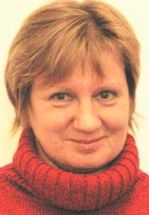
The Czech psychologist and psychoanalyst Marie Hošková grew up as the eldest of ten children in a Catholic family in the ČSSR. Her mother, Marie Kaplanová, née Svobodová, worked as a foreign correspondent and later served as a Christian Democratic member of parliament. Her father, Jiří Kaplan, was employed at the Center for Scientific, Technical, and Economic Information in Prague. Both parents were active in underground church work during the communist regime and later involved in the Taizé community.
Marie "Maryška" Kaplanová studied psychology at Charles University in Prague from 1973 to 1978 and earned her doctorate in 1984. In 1977, she married the musician Jiří Hošek (*1955), who comes from a Czech-Jewish family of artists. The couple had two daughters, Dominika and Natálie.
Marie Hošková received her psychotherapeutic training from 1982 to 1987 at SUR, an informal training system for group psychotherapy, which later became the official SUR Institute in 1999. From 1981 to 1999, she undertook psychoanalytic training, during the communist era in secrecy. One of her analysts was Věra Fischelova. She also completed training in group analysis from 1994 to 2001 at the Institute of Group Analysis (IGA) in Copenhagen.
She became a member and training analyst of the Czech Psychoanalytical Society [Česká psychoanalytická společnost ČPS]. In the early 1990s, she was one of the founding members of the Czech Society for Psychoanalytic Psychotherapy [Česká společnost pro psychoanalytickou psychoterapii, ČSPAP], where she worked as a training analyst and supervisor. From 1996 to 2002, she directed training programs in both individual and group analysis. In addition to her private psychoanalytic practice, she gave lectures and presentations at various training institutes and promoted collaboration with psychoanalytic and psychotherapeutic organisations worldwide. (Top of the article)
- SELECTED WORKS
- Psychoanalytické interview a jeho přenosové a protipřenosové aspekty. Rev psychoanal Psychoter 1 (2), 1999, 9-10
- Vnější realita v kontextu psychoanalytického procesu. Rev psychoanal psychoter 5 (1), 2003, 22-26
- Psychoanalytický proces jako koncept. Rev psychoanal Psychoter 10 (1), 2008, 4-11
- Mlčení v psychoanalýze. Rev psychoanal Psychoter 17 (2), 2015, 87-92
- Proč by se měli skupiny bát její členové?. Rev psychoanal Psychoter 18 (1), 2016, 17-26
- Neutralita, abstinence a terapeutická aliance. Rev psychoanal Psychoter 18 (1), 2016, 114-121
- REFERENCES
- Albus, Michael: Gespräch mit Jiří Kaplan. Ost-West Europäische Perspektiven 2, 2009 (2021-12-02)
- ČSPAP, 28.5.2012 (2021-12-02)
- Hošková-Weissová, Helga: Nikdo nás nečekal. Vzpomínky malířky, která přežila holocaust. Brně 2020
- Junová, Hana: Rozloučení s PhDr. Marií Hoškovou [Farewell to PhDr. Marie Hošková]. Psychoterapie 9 (3), 2015, 198
- MyHeritage (2021-12-02)
- SUR (2025-04-28)
- Vrba, Luděk: Za Marií Hoškovou. Rev psychoanal Psychoter 17B (2), 2015, 7-8
- Wikipedia: Jiří Hošek; Marie Kaplanová (2021-12-02)
- Znovu za PhDr. Marií Hoškovou. Rev psychoanal Psychoter 18 (1), 2016, 103-112
- PHOTO: ČSPAP (2021-12-02)
Milica Jojić-Milenković (1928-2008)
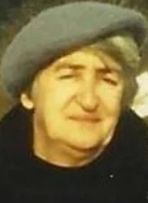
The Yugoslav psychiatrist and psychoanalyst Milica Jojić-Milenković was born in Peć, Montenegro, as one of five children. Her father was a member of parliament after World War I and headmaster of the gymnasium in Peć. During World War II, he was interned in an Italian prison and was executed in 1945 as a collaborator. Her mother was a teacher at the girls’ school of the Kralj Nikola Institute in Cetinje. Milica Jojić-Milenković studied medicine at the University of Belgrade and specialised in psychiatry. Her doctoral thesis, titled Psihodinamika bračnih odnosa (The Psychodynamics of Marriage), was rejected in 1972 in Belgrade because it lacked quantitative research.
Her training analyst was child psychiatrist Vojin Matić, who led the Medical-Pedagogical Counseling Center [Medicinsko-pedagoškog savetovališta] in Belgrade from 1953 to 1963. Milica Jojić-Milenković conducted psychoanalytic psychotherapy with children and their parents at the center, until it was dissolved in 1963. Subsequently she became head of the psychosis department at the Institute for Mental Health [Zavod za mentalno zdravlje] and in 1965 founded the first Marriage and Family Counseling Center in Serbia. She also taught general psychopathology at the Faculty of Philosophy at the University of Belgrade.
In 1990, she was among the founding members of the Belgrade Society for the Development of Psychoanalysis [Beogradsko društvo za razvoj psihoanalize] initiated by Tamara Štajner-Popović. From this society emerged the Belgrade IPA Study Group [Beogradske psihoanalitičke studijske grupe] in 1996 and, later in 2003, the Belgrade Psychoanalytical Society [Beogradsko psihoanalitičko društvo]. Milica Jojić-Milenković became direct member of the International Psychoanalytical Association (IPA) in 1999 and practised as a training analyst and supervisor. She also led training programs in psychoanalytic group therapy in Podgorica, Montenegro. Her publications focused primarily on marital issues and drug addiction. (Top of the article)
- SELECTED WORKS
- Agresivnost u braku i porodici. In M. Milosavljević (ed.): Porodično nasilje i savremeno društvo. Belgrad 1997, 131-137
- (and Zdenka Aleksić) Ličnost i narkomanija. Belgrad 1970
- (with Miroslav Antonijevic, Jovan Bukelic, Ljubo Mirevic, Slavica Moric Petrovic, and Zdenka Aleksic) Narkomanije mladih. Belgrad 1971
- (with Slavka Moric-Petrovic and Milica Marinkov) Mentalno-higijenski problemi dece evakuisane posle katastrofalnog zemljotresa u Skoplju [Mental hygiene problems of children evacuated after catastrophic earthquake in Skopje]. Anali Zavoda Za Mentalno Zdravlje 4 (1), 1972, 53–64
- (with Tomislav Melcer and Marko Munjiza) Pokušaj bolje da razumeš sebe. Kako uspešnije i srećnije živeti. Belgrad 2004
- REFERENCES
- Kordić, Boris: Historija psihoanalize u srbiji u XX veku [History of psychoanalysis in Serbia in the twentieth century]. Engrami 33 (1), 2011, 93-105 (2023-02-08)
- Kostić, Andela: Život i rad psihoanalitičara Vojina Matića. AnimaPlus Blog, 23.11.2019 (2023-02-08)
- Psychoanalytical Society of Serbia (PSS) (2023-02-08)
- PHOTO: Prominent Women Pioneers at the IPA (2023-03-29)
Hana Junová née Smržová (1937-2021)
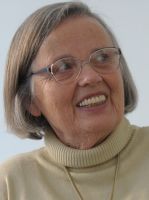
The Czech psychoanalyst Hana Junová was born in Prague, the daughter of the engineer and filmmaker Karel Smrž and the child psychologist Anna Vohryzková, who was of Jewish origin. From 1955 to 1960, Hana Junová studied psychology at Charles University in Prague and earned her doctorate in 1968. While studying, she married the nuclear physicist Jaromír "Mirek" Jun. The couple had three children: Michal, Jan, and Markéta.
In 1961, she began working as a psychotherapist at the Rehabilitation Center for the Neurotic at Lobeč, a branch of the Prague Psychiatric University Clinic, where mentally ill patients were treated free of charge for six weeks. The center practiced Integrated Psychotherapy, developed by psychiatrist Ferdinand Knobloch, who combined the then-banned psychoanalysis with learning theory and ethological approaches. Hana Junová adopted Knobloch’s concept of psycho-gymnastics, a non-verbal psychotherapeutic method based on pantomime, which she significantly expanded.
In the 1960s, Hana Junová pursued additional training in group psychotherapy with Knobloch and in Concentrative Movement Therapy with Helmuth Stolze in Lindau. In Prague, she began a then illegal psychoanalytic training with Ladislav Haas, continuing with Otakar Kučera after Haas emigrated to London in 1965. Her supervisor was Theodor Dosužkov. She completed her training analysis in 1973 and became a direct member of the International Psychoanalytical Association (IPA).
After returning from a one-year stay in Turkey, Hana Junová began working in 1969 at the psychotherapeutic day clinic Horní Palata, which Ferdinand Knobloch had founded in Prague based on the model of Lobeč. She led training courses in group psychotherapy, including those organised by SUR, as well as in non-verbal therapy. As a psychoanalyst, she could only work covertly until 1989. Following the "Velvet Revolution", she worked as an assistant professor at the Institute of Psychology at Charles University until 1998 and also taught part-time at the Institute of Medical Psychology. In addition, she lectured in the Nonverbal Theatre Department at the Academy of Performing Arts in Prague.
After her retirement, Hana Junová dealt mainly with questions of ethics in psychology. (Top of the article)
- SELECTED WORKS
- Niewerbalne zachowanie sie i jego wykorzystanie w psychoterapii. Psychoterapia 13, 1975, 3-43
- Psychogymnastika. Kosmonosy 1981
- Psychogymnastik in der stationären Gruppenpsychotherapie. Psychiatrie, Neurologie und medizinische Psychologie 31 (7), 1979, 421-428
- MUDr. Zdeněk Mrázek. Rev psychoanal Psychoter 11 (1), 2009, 57-60
- Psychologové v Evropě a jejich etika. Psychoterapie 4 (2), 2010, 132-134
- Mé osobní etické otazníky. Psychoterapie 6 (2), 2012, 128-129
- (mit Ferdinand Knobloch, M. Petrusová et al.) Psychogymnastika jako prostředek diagnostiky osobnosti a přeučování mezilidských vztahů. Československá psychologie 2 (8), 1964, 113-120
- (und Ferdinand Knobloch) Psychogymnastik als eine Methode der Psychotherapie. Praxis der Psychotherapie 11 (2), 1966, 63-76
- (und Pavla Císařová) Etika v evropské a české psychologii. Psychologie dnes 8 (1), 2002, 4-5
- REFERENCES
- Česká asociace psychoterapii (2024-09-18)
- Interview mit Hana Junová (2018). Česká asociace psychoterapii (2020-07-07 - in the meantime deleted)
- Jakubu, Jirí: Eine Rose ist eine Rose ist eine Rose. Zdenek Mrázek, Hana Junová und das Phänomen Lobec - Horní Palata. Luzifer-Amor 35 (70), 2022, 119–144
- Kopřivová, Marie, und Ivana Růžičková: PhDr. Hana Junová. Rev psychoanal psychoter 13 (1), 2011, 55-58
- Paměť národa / Memory of Nations: PhDr. Hana Junová, roz. Smržová (2021-11-09)
- Schöfer, Elena: Der Kranke, die Gruppe und das Kollektiv. Zeit, 26.9.1969
- Wikipedia (2025-04-29)
- PHOTO: Česká asociace psychoterapii
Marietta Karpe née Eidlitz (1912-2009)
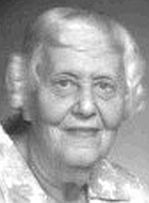
Marie "Marietta" Caroline Eidlitz was born in Prague*, the daughter of Friedrich and Ida Eidlitz, née Schlosser. Her father was a lawyer and a board member of the Zionist-Religious community in Pilsen. Marietta Eidlitz attended the girls' high school in Pilsen until 1930 and then studied law in Prague, where she joined the "Blue-White" Zionist youth movement. Her youth novel Die Seele des André Garaine, published in 1930, was later placed on the Nazis' "List of damaging and undesirable writing."
In 1931, she married the Prague pediatrician Richard Karpe (1898–1981). Both joined the Prague Psychoanalytic Study Group, initially led by Franziska Deri and from 1935 by Otto Fenichel. Richard Karpe participated as a supervisand and secretary, while Marietta Karpe took part as a candidate or guest. In 1935, she gave a lecture there on the Czech caricaturist Dr. Desiderius (i.e., Hugo Böttinger). That same year, she began translating Sigmund Freud’s Lectures into Czech.
Shortly before the German Wehrmacht occupied Prague, Marietta and Richard Karpe managed to flee to the United States in 1939. They first settled in Boston, Massachusetts, and then, from 1942, in Hartford, Connecticut, where their three daughters Dora (Dvora), Barbara, and Jane were born. Richard Karpe established himself as a psychoanalyst and became a member of the Boston Psychoanalytic Society and the Western New England Psychoanalytic Society.
Marietta Karpe attended Smith College for Women in Northampton and received a Master of Social Work degree in 1941. Her thesis Resistance and anxiety as factors in the discontinuance of child guidance treatment was based on her field work at the Worcester Child Guidance Clinic.
She worked in children and family services and at the Massachusetts Reformatory for Women in Framingham, before beginning her long career in 1962 as a psychiatric social worker at the Child Guidance Clinic in New Britain, Hartford County. In 1980, the Karpes moved to Coventry, Connecticut, where Marietta Karpe passed away at the age of 97.
Marietta Karpe was particularly interested in theater and literature and published two essays offering psychoanalytic interpretations of the characters "Peter Pan" and (with Richard Karpe) "Mary Rose" by James Matthew Barrie. (Top of the article)
- *City Archives of Pilsen (Hall 2019, 8)
- SELECTED WORKS
- (Eidlitz, Marietta) Die Seele des André Garaine. Die Geschichte einer Jugend. Wien; Leipzig 1930
- Psychoanalytisches über den tschechischen Karikaturisten Dr. Desiderius. Lecture, Psychoanalytiká skupica v Ĉ.S.R., 11 Nov. 1935
- Resistance and anxiety as factors in the discontinuance of child guidance treatment. Smith College Studies in Social Work 12 (4), 1942, 374-414
- The origins of Peter Pan. Psychoanalytic Rev 43, 1956, 104-110
- (and Richard Karpe) The meaning of Barrie's "Mary Rose". IJP 38, 1957, 408-411
- (and Richard Karpe) The significance of Freud's trip to Orvieto. Israel Annals of Psychiatry & Related Disciplines 17(1), 1979, 3-20
- REFERENCES
- Benveniste, Daniel: Emanuel Windholz - The institute builder (Juli 1994). International Psychoanalysis (29.6.2020)
- Geni (3.12.2015)
- Hall, Murray G.: Die Seele des André Garaine von Marietta Eidlitz. Ein deutscher Jugendroman im Zeitalter der Psychoanalyse. libri liberorum. Fachzeitschrift für Kinder- und Jugendliteraturforschung 20 (52-53), 2019, 7-19 (18.12.2023)
- Handbuch österreichischer Autorinnen und Autoren jüdischer Herkunft: 18. bis 20. Jahrhundert, Bd. 1. Hg. von der Österreichischen Nationalbibliothek. München 2002
- Hartford Courant, 8.10.1962, 42 (19.12.2023)
- Hermanns, Ludger M.: The Prague Psychoanalytic Study Group 1934-1938: Frances Deri, Annie Reich, Theodor Dosužkov, and Heinrich Löwenfeld. Contribution to a panel at the IPAC in Prag, 2013
- IZP 22 (2), 1936, 292
- Mühlleitner, Elke: Ich - Fenichel. Das Leben eines Psychoanalytikers im 20. Jahrhundert. Wien 2008
- Obituary Marietta C. Karpe. Journal Inquirer, Sept. 2009 (3.12.2015)
- Verbrannte und Verbannte (16.12.2016)
- Smith, Margaret: The Holocaust: Dvora Caspi of Shrewsbury shares her family's story. Worcester Magazine, 12.7.2023 (18.12.2023 - inzwischen wurden die Fotos gelöscht)
- PHOTO: Geni
Ludwika Karpińska (1872-1937)
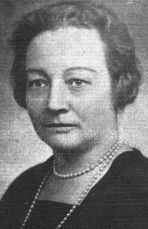
The psychologist Ludwika Karpińska, also known as Luise von Karpinska, was a pioneer of psychoanalysis in Poland. She was born into a Catholic family in Plock (or Warsaw), the youngest daughter of Nestor Kazimierz Karpiński and Katarzyna Fery. After graduating from an all-girls high school in 1892, she worked as a private tutor in Warsaw. During this time, she attended lectures at the Flying University [Uniwersytet Latający], an underground school of higher education for women. In 1897, she began studying psychology in the Faculty of Philosophy at the
Friedrich Wilhelm University in Berlin, focusing particularly on experimental psychology.
In 1899, financial difficulties forced Karpińska to return to Warsaw, where she workef as a teacher until she was able to continue her psychology studies at the University of Zurich in 1907. She attended psychoanalysis lectures by Eugen Bleuler and Carl Gustav Jung at the Psychiatric University Clinic Burghölzli and participated in Jung’s association experiments. In 1910, she earned her doctorate with a dissertation on the topic
of stereoscopic vision.
On Jung's recommendation, Karpińska made contact with psychiatrist Ludwik Jekels, an early promoter of psychoanalysis in Poland. In 1909, she made her debut as a "Polish Freudian" at the First Congress of Polish Neurologists, Psychiatrists, and Psychologists in Warsaw. At the end of 1909, she traveled with Jekels to Vienna and attended four meetings of the Vienna Psychoanalytic Society as a guest. She also underwent analysis in Vienna, although it remains unclear whether it was conducted by Jekels or another analyst.
In 1911, Ludwika Karpińska moved to Zakopane, where she presumably met her future husband, Marcin Woyczyński (1870–1944), a physician and member of the Polish Socialist Party. Until the outbreak of World War I, she published various German and Polish papers on psychoanalysis. Her most important work is the essay Über die psychologischen Grundlagen des Freudismus (1914), in which she highlighted similarities between the psychoanalytic method and experimental psychology. She was the first to draw an analogy between Herbart’s dynamics of mental forces and Freud’s dynamics of affect.
In the Second Polish Republic, Ludwika Karpińska-Woyczyńska became director of the Municipal Psychological Lab in Łódź in 1920. In subsequent years, she focused on psychological diagnostics for children and adolescents and on the development of psychological aptitude tests. In 1928, she became an assistant professor of experimental psychology at the newly founded Łódź branch of the Free Polish University and headed the Institute of Psychotechnics there. She was also a member of the editorial committee of the journal Psychotechnika an.
In 1930, Ludwika Karpińska-Woyczyńska retired and lived with her husband in Warsaw, where Marcin Woyczyński was appointed personal physician to Marshall Józef Piłsudski. In 1935, she was arrested on suspicion of espionage for the USSR — likely due to her contacts with Russian psychiatrists and psychotechnicians — but was released for lack of evidence. (Top of the article)
- SELECTED WORKS
- Experimentelle Beiträge zur Analyse der Tiefenwahrnehmung. Phil. Diss. Zürich 1910
- Przyczynki doświadczalne do widzenia głębi [Experimentelle Beiträge zur Tiefenwahrnehmung]. In A. Ciaglinski et al. (Hg): Prace I-go Zjazdu Neurologów, Psychiatrów i Psychologów Polskich odbytego w Warszawie 11-12-13 pazdziernika 1909 r.. Warschau 1910
- Badania doświadczalne nad kojarzeniem wyobrazeń [Experimentelle Studien zur Ideenassoziation]. Przegląd Lekarski 51, 1912, 43-47
- Psychologiczne podstawy freudyzmu. Przegladzie Filozoficznym 16 (4), 1913, 508-526 [Über die psychologischen Grundlagen des Freudismus. Intern Zschr ärztl Psychoanal 2 (4), 1914, 305-326]
- Beiträge zur Psychopathologie des Alltagslebens. Zentralblatt 3 (6-7), 1913, 309-312
- Ein Beitrag zur Analyse "sinnloser" Worte im Traume. Intern Zschr ärztl Psychoanal 2 (2), 1914, 164-170
- O psychoanalizie [Über die Psychoanalyse]. Ruchu Filozoficznym 4 (2), 1914, 32-38
- Rola psychologii w doborze dzieci umysłowo upośledzonych do szkoły pomocniczych. Ruch Pedagogiczny 10 (4-5), 1923, 65-75
- Miejska Pracownia Psychologiczna w Łodzi. Psychotechnika 1 (3), 1927
- REFERENCES
- Dembinska, Edyta, und Krzysztof Rutkowski: Ludwika Karpinska: "Polish Lady Philosopher" - a forgotten forerunner of Polish psychoanalysis. Psychiatria Polska 52 (4), 2018, 753–765 (2023-02-24)
- Dembinska, Edyta, und Krzysztof Rutkowski: Ludwika Karpińska-Woyczyńska. The forgotten first female Freudian. In K. Naszkowska (ed.): Early Women Psychoanalysts History, Biography, and Contemporary Relevance. London 2024
- Dybel, Pawel: Unterbrochene Wege. Zur Geschichte der Psychoanalyse in Polen. Psyche 53 (11), 1999, 1160-1187
- Groth, Jaroslaw: Polnische Freudianerinnen - Ludwika Karpinska, Helene Deutsch & Eugenia Sokolnicka. In P. Dybel, E. Kobylinska-Dehe and L. M. Hermanns (eds): Zwischen Hoffnung und Verzweiflung. Psychoanalyse in Polen im polnisch-deutsch-jüdischen Kulturkontext 1900-1939. Gießen 2018, 101-120
- Groth, Jaroslaw, und Katarzyna Waszynska: Na pograniczu psychologii i pedagogiki - czyli zycie i dzialalnosc Ludwiki Karpinskiej-Woyczynskiej [On the border of psychology and pedagogy - the life and work of Louise Karpiñska-Woyczyñska]. Studia Edukacyjne Nr. 33, 2014, 279-303
- Groth, Jaroslaw: Ludwika Karpińska–Woyczyńska (Luise von Karpinska) (1872–1937). The history of psychoanalysis in Poland in its cultural, literary, political and social contexts (1900–2013) (2024-05-14)
- Groth, Jaroslaw: Od psychoanalizy do psychotechniki – Ludwika Karpińska-Woyczyńska (Luise von Karpinska). In P. Dybel (ed.): Przywracanie pamięci. Polscy psychiatrzy XX wieku orientacji psychoanalitycznej. Krakau 2017, 135-201
- Matrikeledition der Universität Zürich (2019-06-06)
- Mühlleitner, Elke: Frauen in der Wiener Psychoanalytischen Vereinigung 1902-1938. Psyche 54 (7) 2000, 642-668
- Wikipedia: Ludwika Karpińska; Marcin Woyczynski (2021-01-28)
- PHOTO: Wikipedia (2023-03-06)
Feiga Kramer (1892-1941?)
The Latvian physician and psychoanalyst Feiga Kramer came from Riga. Presumably she attended – like Berta Bers – the lectures of Ernst Schneider, Swiss educator and psychoanalyst, who taught at the University of Latvia in Riga until 1928. Feiga Kramer completed her psychoanalytic training in Germany at the Berlin Psychoanalytic Institute in the early 1930s and underwent a training analysis with the Freudo-Marxist Otto Fenichel. During Fenichel’s visits to Riga, he supervised her case studies.
In 1934, Feiga Kramer became a member of the Danish-Norwegian Psychoanalytical Society [Dansk-Norsk Psykoanalytiska Förening] (DNPF), where Fenichel served as secretary following his emigration to Oslo. She herself was only rarely in Oslo, and her introductory lecture, Analyse einer schweren Zwangsneurose, was presented by Fenichel. At the end of 1934, she was among the DNPF members who advocated for the admission of the „dissident“ Wilhelm Reich to the Society.
Together with Berta Bers, Feiga Kramer attempted to establish a psychoanalytic circle in Riga starting in 1933, with Fenichel supporting her during his visits between 1933 and 1935, before he emigrated to Prague. However, their efforts were doomed to fail: Jewish analysts in Riga faced political persecution, as Fenichel reported in his circular letters. While Berta Bers emigrated to New York, Feiga Kramer remained in Riga and was presumably murdered there during the German occupation. (Top of the article)
- SELECTED WORKS)
- Analyse einer schweren Zwangsneurose. Lecture at the DNPF, 18 Oct. 1934
- REFERENCES
- Alnæs, Randolf: Otto Fenichel und Wilhelm Reich in Oslo. Die norwegische Psychoanalyse in der Zwischenkriegszeit. Jb Psychoanal 37, 1996, 206-247
- Fenichel, Otto: Danish-Norwegian Psycho-Analytical Society. Bul Int Psychoanal Assn 16, 1935, 121
- Fenichel, Otto: 119 Rundbriefe (1934-1945). Hg. von E. Mühlleitner und J. Reichmayr. Frankfurt/M.; Basel 1998
- Mühlleitner, Elke: Ich - Fenichel. Wien 2008
- Palumbo, José Henrique Parra: Sobre as concepções de Otto Fenichel. Psicanálise, materialismo-dialético e naturalismo científico. Phil. Diss. São Paulo 2019
- Šuvajevs, Igors: Psihoanalīzes pēdas Latvijā [Spuren der Psychoanalyse in Lettland]. Riga 2012
- Zigmunde, Alīda: Der Psychoanalytiker und Pädagoge Ernst Schneider (1878–1957) im Widerstreit der Meinungen seiner Zeitgenossen in Lettland (1920–1928). Humanitārās un Sociālās Zinātnes Nr. 27, 2017, 80-92
Ljiljana Milosavljević (1928-2014)
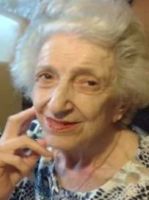
Ljiljana Milosavljević, a Yugoslav pediatrician and psychoanalyst born in Belgrade, studied medicine at the University of Belgrade and graduated from the Belgrade Music Academy, before specialising in pediatrics. She worked at the Medical Pedagogical Counseling Center [Medicinsko-pedagoškog savetovališta] in Belgrade, which was founded in 1953 and directed until 1963 by the child psychiatrist Vojin Matić, a leading figure in Serbian post-war psychoanalysis. During that time, she began a training analysis with Matić, but later moved to Zagreb and completed her analysis with Stjepan Betlheim, the pioneer of Croatian psychoanalysis and a direct member of the IPA since 1953. After the counseling center closed, she transferred to the Institute for Mother and Child [Institut za majku i dete] in Belgrade, where in 1963 she established a psychotherapeutic centre, the first one in a general hospital for children. Later she was Director of the Centre for Protection of Infants, Children and Youth "Zvecanska" in Belgrade.
In 1990, together with Milica Jojić-Milenković and Tamara Štajner-Popović, she was one of the founding members of the Belgrade Society for the Development of Psychoanalysis [Beogradsko društvo za razvoj psihoanalize], from which the Belgrade IPA Study Group [Beogradske psihoanalitičke studijske grupe] emerged in 1996, and later, in 2003, the Belgrade Psychoanalytical Society [Beogradsko psihoanalitičko društvo], IPA Component Society since 2007. In 1999, Ljiljana Milosavljević became a direct member of the IPA. Her work focused primarily on agoraphobia and psychosomatics in children. (Top of the article)
- SELECTED WORKS
- (und Ksenija Kondić) Transfer i kontratransfer u analitičkoj terapiji dece. Psihijatrija danas15, 1983, 167-173
- REFERENCES
- Bull Int Psycho-Anal Assn 81, 2000, 410
- EPF (2025-05-01)
- Kordić, Boris: Historija psihoanalize u srbiji u XX veku (History of psychoanalysis in Serbia in the twentieth century). Engrami 33 (1), 2011, 93-105 (2023-02-10)
- Psihoanalitičko društvo Srbije (PDS) (2024-09-10)
- PHOTO: Prominent Women Pioneers at the IPA (2023-03-29)
Brîndușa Orășanu
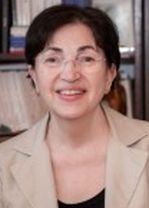
The Romanian psychoanalyst Brîndușa Orășanu (Brindusa Petrescu) attended high school in Suceava, in northeastern Romania, and then studied biochemistry from 1981 to 1988 at the Polytechnic University of Bucharest. In 1990, she began to study psychology, first at the University of Bucharest (graduating in 1995) and then at Paris Diderot University, where she earned her PhD in Psychopathologie fondamentale et Psychanalyse (Dir. Jacques André) in 2002. Her dissertation on projective identification was published in French in 2004 (L'identification projective. Les énigmes d'un concept), in Romanian in 2005 (Biografia unui concept. Identificarea proiectivă), and in English in 2016 (Projective Identification and Narcissism in the Psychoanalyst's Theory and Clinical Work).
In 1991, Brîndușa Orășanu established a private psychoanalytic practise in Bucharest. In 1997, she became a direct member of the IPA with the status of training analyst and supervisor of the Romanian Society of Psychoanalysis [Societatea Psihanalitică Română] (SPR). The SPR became a Provisional Society of the IPA in 2011 and a Component Society under the name Societatea Română de Psihanaliză (SRP) in 2017. Orășanu is president of the SRP's ethics committee and was a co-founder of its official journal, the Romanian Journal of Psychoanalysis.
Since 2004, Brîndușa Orășanu has been Associate Professor of Psychoanalytic Psychopathology at Titu Maiorescu University in Bucharest. In addition, she has been an associate researcher of the Unité Transversale de Recherche Psychogenèse et Psychopathologie (UTRPP) at the University of Paris 13 since 2009, and of the Centre de Recherches Psychanalyse, Médecine et Société (CRPMS) at the University of Paris 7 since 2014. (Top of the article)
- SELECTED WORKS
- [Petrescu] L'identification projective. Les énigmes d'un concept. Phil. Diss. Paris 2002 + Lille 2004
- Biografia unui concept. Identificarea proiectivă. Bukarest 2005 [Projective Identification and Narcissism in the Psychoanalyst's Theory and Clinical Work. New York 2016]
- The experience of a totalitarian regime and psychoanalytical thinking. Rom J Psychoanal 1, 2008, 34-40
- Memories and triangulation in interpretive work (I + II). Revista de Psihologie 57 (3), 2011, 227-236 + 57 (4), 2011, 349-357
- La haine inconsciente (à propos des Frères Karamazov). Rom J Psychoanal 3, 2010, 477-495
- Un paradoxe du changement. Rom J Psychoanal 4 (1), 2011, 26-36
- L'espace et le temps du contre-transfert. Rom J Psychoanal 5 (2), 2012, 46-67
- Création du temps dans le rêve et dans le processus psychanalytique. Rom J Psychoanal 7 (2), 2014, 49-65
- L'éthique en psychanalyse comme „retour à la maison“ de la méthode. RFP 78 (5), 2014, 1618-1622
- Impasse in working-through and the psychoanalyst's ethics. Rom J Psychoanal 8 (2), 2015, 21-34
- Limites en mouvement. Rom J Psychoanal 9 (1), 2016, 65-89
- Notiuni de psihopatologie in psihanaliza. Bukarest 2016
- Psychic truth and questions of identity. Rom J Psychoanal 10 (1), 2017, 17-36
- Patient, lacrimae rerum, interprète. RFP 81 (5), 2017, 1671-1676
- [Petrescu] Des mots qui n’arrivent pas à voir. In Jacques André et al.: La honte. Ecouter l'impossible a dire. Paris 2017, 33-54
- Complexe fraternel et dissymétrie. Emmy von N.. Rev Belg Psychanal 72 (1), 2018, 85-101
- Œdipe sauvage, fantasme rassurant. RFP 83 (5), 2019, 1533-1538
- Hamlet: Clues of authentication. Revista de Psihologie 65 (1), 2019, 75-94
- Le cynisme, messager hâtif de Thanatos. Rev Belg Psychanal 74 (1), 2019, 69-87
- Revelations. The wild duck versus Hamlet. Rom J Psychoanal 10 (1), 2020, 179-194
- Croire et ne pas croire à ce qui a eu lieu ou non. RFP 85 (5), 2021, 1317-1322
- Group portrait with lady and its concrete character. Rom J Psychoanal 15 (2), 2022, 15-30
- Distance psychique, figuration et langage. RFP 86 (5), 2022, 1155-1160
- REFERENCES
- Centre d'études Psychopathologie et Psychanalyse Paris 7-Diderot (2023-04-14)
- LinkedIn (2023-04-14)
- SRP: Conferentiari 2025 + Istoric (2025-05-02)
- PHOTO: Courtesy of Brindusa Orasanu
Tatjana Pushkaryeva (1955-2020)

Tatjana Nikolaevna Pushkaryeva (Pushkarova), a pioneer of psychoanalysis in Ukraine, was born in Kazakhstan, Russia. Her father, Nikolai Pushkarev, worked as a chief engineer involved in the construction of power plants in the USSR. Her mother was a cardiologist. Tatjana Pushkaryeva completed her medical studies in Stavropol, earned a doctorate in medicine, and specialised as a psychotherapist, psychiatrist, and child psychiatrist in Moscow, St. Petersburg, and Kyiv. In 1986, she moved to Kyiv and became the Scientific Chief of the Centre of Psychosomatics and Psychotherapy at the Institute of Pediatrics, Obstetrics, and Gynecology of the Ukrainian National Academy of Medical Sciences.
She received her psychoanalytic training at the Han Groen-Prakken Institute for Eastern Europe (PIEE), founded in Amsterdam in 2002. In 2007, she became a direct member of the International Psychoanalytical Association (IPA). In addition to her work as a psychoanalyst for adults and children in Kyiv, she was committed to building Ukrainian psychoanalytic institutions and to the dissemination of psychoanalysis, especially in Eastern Europe. In 2010, she was one of the founders of the Ukrainian Association of Psychoanalytical Psychotherapy (UAPP) [Украинская ассоциация психоаналитической психотерапии (УАПП)] and a founding member of the Ukraine Psychoanalytic Society (Study Group) [Украинское Психоаналитическое Общество (УПО)], where she became a training analyst in 2016. She also served as a training analyst and supervisor within the UAPP.
Tatjana Pushkaryeva took part in numerous research projects of the IPA, the European Psychoanalytical Federation (EPF), the PIEE, and other international organisations. Among others, she served as the coordinator and supervisor of the Ukrainian-British project on infant mental health based on the Tavistock model of Infant Observation, starting in 2013. Like Lenina Bondarenko, she co-authored a history of psychoanalysis in Ukraine (with Igor Romanov).
In 2019, Tatjana Pushkaryeva married the Italian psychiatrist and psychoanalyst Paolo Fonda (*1942) and moved to Trieste. One year later, she died in a tragic mountain accident in the Julian Alps. (Top of the article)
- SELECTED WORKS
- Основы и клиническое значение материнской привязанности [Grundlagen und klinische Bedeutung der Mutterbindung]. Журнал Практической Психологии и Психоанализа Nr. 4, 2002
- Психодинамическая диагностика депрессивных расстройств [Psychodynamische Diagnostik depressiver Störungen]. Журнал Практической Психологии и Психоанализа Nr. 1, 2009
- В поисках благодатной почвы: генеалогия и фертильность в психоанализе [Auf der Suche nach fruchtbarem Boden: Genealogie und Fruchtbarkeit in der Psychoanalyse]. Журнал Практической Психологии и Психоанализа Nr. 3, 2013
- Материнская привязанность, ранние объектные отношения и родительская рефлексивная функция [Mütterliche Bindung, frühe Objektbeziehungen und die Spiegelfunktion der Eltern]. Гештальт Клуб, 24.6.2014
- Память и забвение. Новые грани воспоминания, повторения и проработки – отклик на статью Д. Скляра [Erinnerung und Vergessen. Neue Facetten des Erinnerns, Wiederholens und Ausarbeitens – eine Antwort auf J. Sklyar]. Журнал Практической Психологии и Психоанализа Nr. 1, 2016
- Ruined lives. Repressions in the Soviet Union. Romanian Journal of Psychoanalysis 13 (2), 2020, 131-156 + Paolo Fonda Website [Vite distrutte. Considerazioni sulla maternità e sul ruolo della cultura nell’epoca della repressione sovietica. Psiche 2, 2020, 562-577] (2023-03-06)
- (and Игорь Романов) К истории психоанализа в Украине [Zur Geschichte der Psychoanalyse in der Ukraine]. ХОП (2025-05-20)
- REFERENCES
- Fonda, Paolo: Obituary Tatjana Pushkaryeva. EPF (2024-10-04)
- Il Piccolo, 7 Julio 2020
- UAPP / УАПП (2021-11-18 - in the meantime deleted)
- UPO / УПО (2021-11-18 - in the meantime deleted) - now on Facebook (2023-03-06)
- PHOTO: EPF
Erika Saluveer née Karuse (*1960)
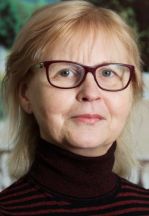
The Estonian psychiatrist and psychoanalyst Erika Saluveer introduced the integrated treatment of first-episode psychosis — originally developed in Scandinavia — into Estonia. Since 1999, she has been the head of Ward IX at the Psychiatric Clinic of the North Estonia Medical Centre [Põhja-Eesti Regionaalhaigla], where first-episode psychotics are treated by a multidisciplinary team consisting of a psychiatrist, a psychiatric nurse, and a psychologist. From the very beginning, family members are also actively involved in the treatment process.
Erika Saluveer received her psychoanalytic training between 2000 and 2004 at the Suomen Psykoanalyyttinen Yhdistys in Finland and became a direct member of the International Psychoanalytical Association. In 2004, she was one of the founders of the first psychoanalytic society in Estonia, the Eesti Psühhoanalüütiline Selts (EPAS). She is a training analyst and former president of the Estonian-Latvian Psychoanalytical Society [Eesti-Läti Psühhoanalüütiline Selts], which was officially established in 2016.
Erika Saluveer runs a private psychotherapeutic practice in Tallinn. Since 1979, she has been married to the Estonian conductor and music pedagogue Aarne Saluveer (*1959), and they have two sons, Sten Kristjan and Karl. (Top of the article)
- SELECTED WORKS
- Skisofreenik on inimene meie seast. Eesti Päevaleht, 30.4.2002, 11
- Kaotusevalust pääsemine võimalik. Meditsiiniuudised, 8.2.2011, 16-17
- (with Andres Adams, Ants Parktal, Endel Talvik and Tiina Jõged) Eestlaste viha tuleneb Teise ilmasõja traumadest. Eesti Ekspress, 22.7.2010, 12-13
- (with Kaire Aadamsoo, Harri Küünarpuu, Veiko Vasar and Eduard Maron) Diagnostic stability over 2 years in patients with acute and transient psychotic disorders. Nordic Journal of Psychiatry 65 (6), 2011, 381-388
- (and Katrin Eino) Psühhoosihaigele võimaldatud nüüdisaegne toetusravi toob kasu nii haigele kui ka ühiskonnale. Eesti Arst Nr. 3, 2016, 151-153
- (with Karola Peebo, Harri Küünarpuu, Teele Orgse and Jaanus Harro) First-episode psychosis integrative treatment: Estonian experience. Nordic Journal of Psychiatry, 18.7.2021 (27.12.2021)
- REFERENCES
- Kilumets, Margit: Erika ja Aarne Saluveer. Psühhiaatri ja koorijuhi, muusikapedagoogi abielust ja perekonnast. Eesti Naine Dezember 2001, 84-85
- Estonian-Latvian Psychoanalytical Society (ELPS) (2021-12-27)
- Eesti Psühhoanalüütiline Selts (EPAS) (2021-12-27)
- Geni (2021-12-27)
- Parktal, Ants, Jane Meimer-Parktal and Meelis Sütt: Brief report about development and place of psychoanalysis in Estonia. Psühhoanalüüsi ja Psühhoanalüütilise Psühhoteraapia Keskus / Center of Psychoanalysis and Psychoanalytical Psychotherapy, 8.3.2015 (2021-12-27)
- Põhja-Eesti Regionaalhaigla + Põhja-Eesti Regionaalhaigla, 29 Jan. 2020 (27.12.2021)
- Wikipedia: Aarne Saluveer (2021-12-27)
- PHOTO: Psühhiaatriakliinik, Regionaalhaigla
Vera Şandor
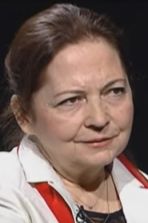
The Romanian psychologist and psychoanalyst Vera (Veronica) Şandor completed her psychology studies at the University of Bucharest in 1975. She then worked as a clinical psychologist at the “23 August” Children’s Hospital (until 1984) and the “Dr. Gheorghe Marinescu” Psychiatric Hospital in Bucharest. Like Nadia Bujor and Irena Talaban, she was one of the analysands of Eugen Papadima, who clandestinely maintained psychoanalytic training in communist Romania until his emigration in 1988. Subsequently, she conducted psychoanalytic psychotherapy with children and parents in Romania. From 1993 to 2003, she taught at Titu Maiorescu University in Bucharest.
In 1990, Vera Şandor was among the founding members of the Romanian Psychoanalytic Society [Societatea Psihanalitica Româna] (SPR). That same year, she traveled to France for further analysis, and from 1991 to 1998 she completed formal psychoanalytic training with the Société Psychanalytique de Paris (SPP). In 1992, she graduated under Jean Laplanche at the Centre de Recherches en Psychanalyse et Psychopathologie at the University of Paris 7. Since 1994, she has been a direct member of the IPA, and since 1997 a training analyst and supervisor of the SPR, which became a component society of the IPA in 2017 as the Societatea Română de Psihanaliză (SRP). Vera Şandor served three terms as president of the SPR/SRP (1993–1995, 2000–2002, and 2008–2009), and in 2007 she co-founded the SRP journal Romanian Journal of Psychoanalysis.
She is a member of the SPP and the European Society of Child and Adolescent Psychoanalysis, as well as the Romanian Psychologists’ Association [Asociația Psihologilor din România]. In addition, she is president of the Fundaţia Generaţia, a training and intervention center in Bucharest for psychoanalytic psychotherapy with children and adolescents, and she directs the foundation's publishing house. Alongside numerous publications on psychoanalytic topics, she also contributed to the Romanian translation of Vocabulaire de la Psychanalyse by J. Laplanche and J.-B. Pontalis [Vocabularul psihanalizei (1994)]. (Top of the article)
- SELECTED WORKS
- Approche de la question. Correspondances freudiennes Nr. 32, 1991, 11-13
- Romania. In P. Kutter (ed.): Psychoanalysis International, Vol. 2. Stuttgart/Bad-Cannstatt 1995, 323-332
- Vindecarea copiilor, vindecarea părinţilor (Interview). Observator cultural Nr. 110 (April), 2002, 18-19 + SRP (2023-03-28)
- Itinerar de psihanaliza. Bukarest 2005
- Cine se teme de Sigmund Freud? Cultura 2 (20), 2006, 17
- Perversiunea narcisiacă. Cultura 2 (21), 2006, 24
- Formes, destins et ages de la haine. Rom J Psychoanal 3, 2010, 53-61
- (ed.) Colocvii de psihanaliză. Bukarest 2010
- The change in psychoanalysis - A critical and fertile reality. Change, healing and transformation in psychoanalytic treatment. Rom J Psychoanal 4 (1), 2011, 70-85
- Des facteurs et des aspects du pluralisme dans la psychanalyse. Rom J Psychoanal 6 (1), 2013, 31-43
- Psychogenesis - factors of the child's psychic development. Some theoretical aspects of the concept of latency period. Rom J Psychoanal 8 (2), 2015, 73-81
- Abuz în scop "educativ". Dilema veche 13 (624), 2016, 4
- Identity figures - identity configurations psychogenesis, psychopathological configurations. Rom J Psychoanal 10 (1), 2017, 55-65
- 10 years of Romanian Journal of Psychoanalysis. Rom J Psychoanal 10 (2), 2017, 227-234
- Partea nevăzută a ființei. Eseuri de psihanaliză. Bukarest 2019
- (with Iona Scoruş, Eugen Papadima, Radu Clit, Alfred Dumitrescu and Irena Talaban) Paradoxurile psihanalizei în România. Piteşti 2007
- REFERENCES
- Georgescu, Matei: Interview with Vera Şandor (2015). TVH (2023-03-28)
- Istoria Psihanalizei in Romania dupa 1989. SCRIBD May 17, 2020 (28.3.2023)
- Şandor, Veronica: 10 years of Romanian Journal of Psychoanalysis. Rom J Psychoanal 10 (2), 2017, 227-234 (Curriculum Vitae)
- Societatea Romana de Psihanaliza (2023-03-14)
- Tudose, Cătălina, und Florin Tudose: The history of psychotherapy in Rumania during the socialist dictatorship of Nicolae Ceauşescu. European Journal of Mental Health 7, 2012, 221–235 (2024-09-10)
- PHOTO: Courtesy of Vera Şandor
Tamara Štajner-Popović (1948-2012)
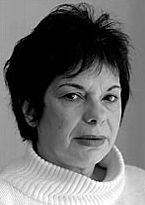
The Serbian child analyst Tamara Štajner-Popović was born in Belgrade into a Jewish family. During the Second World War, her parents were active in the illegal Jewish resistance movement in Amsterdam and Budapest. Tamara studied Clinical Psychology at the University of Belgrade and specialised in the psychopathology of children and adolescents in the 1970s under child psychiatrist Vojin Matić. She also underwent her training analysis with Matić, who had himself been a training analysand of Nikola Šugar, the pioneer of Serbian psychoanalysis.
Her attempt in the late 1970s to establish psychoanalysis at the University of Belgrade through a postgraduate program in psychology was blocked by the Communist Party. More successful were her efforts to institutionalise psychoanalysis in Serbia during the 1980s and 1990s, supported by Han Groen-Prakken, president of the European Psychoanalytical Federation, and by her husband Aleksandar Vučo (1952–2018).
In 1990, Tamara Štajner-Popović initiated the founding of the Belgrade Society for the Development of Psychoanalysis [Beogradsko društvo za razvoj psihoanalize], and in 1995, Štajner-Popović, Vojin Matić, Aleksandar Vučo, and other Serbian psychoanalysts became direct members of the IPA. This enabled the founding of the Belgrade IPA Study Group [Beogradske psihoanalitičke studijske grupe] the following year, with Tamara Štajner-Popović serving as its first training analyst and president. In 2007, the Belgrade Society became an IPA Component Society under the name Beogradsko psihoanalitičko društvo (BPD). Following a controversial ethics complaint against Tamara Štajner-Popović and Aleksandar Vučo, the majority of members left the BPD in 2014 and founded the Psychoanalytical Society of Serbia [Psihoanalitičko društvo Srbije].
Tamara Štajner-Popović also contributed to the recognition of psychoanalysis in Eastern European countries as Associate Director for Outreach at the Han Groen-Prakken Psychoanalytic Institute for Eastern Europe (PIEE) and as Co-Chair of the IPA New Groups Committee (ING). She advocated a post-classical interactional psychoanalysis. A key focus of her publications was the transgenerational transmission of traumatic experiences resulting from the ethnic conflicts in the former Yugoslavia and their impact on the identity development of children in the following generation. (Top of the article)
- SELECTED WORKS)
- Report from Eastern Europe on Eastern Europe. EPF Bulletin 50, 1998, 123-125
- Izgubljena“ druga generacija – krici iz istočne evrope [The ‘lost’ second generation - whispers from Eastern Europe]. In M. and Ž. Martinović (eds): Psihoanaliza i rat [Psychoanalysis and War]. Belgrad 2001, 125-134
- „Disguise or consent: Problems and recommendations concerning the publication and presentation of clinical material“. Glen O. Gabbard and the editorial by David Tuckett. IJP 82 (2), 2001, 415-424
- Childhood in the time tunnel. In T. Štajner-Popović and S. Varvin (eds): Upheaval. Psychoanalytical Perspectives on Trauma. Belgrad 2002 + in J. Szekacs-Weisz and I. Ward (eds): Lost Childhood and the Language of Exile. London 2004
- L'enfance dans le tunnel du temps. Le Coq-héron Nr. 170, 2002/3, 39-52
- Verlorene Kindheit. PTT - Persönlichkeitsstörungen: Theorie und Therapie 9 (4), 2005, 201-211
- Doppelter Pakt des Schweigens. Kinderanalyse 16 (4), 2008, 329-346
- Dobro de... In M. Vranić Ignjačević (ed.): Legende Beogradskog univerziteta: Hugo Klajn, Veselin Čajkanovič, Radomir D. Lukić, Vojin Matić. Zbornik predavanja održanih u Univerzitetskoj biblioteci u periodu 2006–2008. Belgrad 2014, 385-391
- (and Aleksandar Vuco) Vojin Matic, 1911–2000: Čovek kome se ispunio san. Vreme Nr. 480, 2000, 32
- (and Sverre Varvin) (eds) Upheaval. Psychoanalytical Perspectives on Trauma. Belgrad 2002
- (with Vesna Brzev-Ćurčić and Vojislav Ćurčić) Seks, seksualnost i psihoanaliza [Sex, Sexualität und Psychoanalyse]. 2004
- (and Václav Mikota) Developing psychoanalysis under socio-political pressure. Viewpoints from Eastern Europe. IJP 86, 2005, 543-546
- (and Gábor Szőnyi) Shuttle analysis, shuttle supervision, and shuttle life – some facts, experiences, and questions. Psychanal Inq 28, 2009, 309-328
- (and Vesna Brzev-Ćurčić) Ljubav. Belgrad 2009
- (et al.) Borba za psihoanalizu. In M. Vranić Ignjačević (ed.): Legende Beogradskog univerziteta: Hugo Klajn, Veselin Čajkanovič, Radomir D. Lukić, Vojin Matić. Zbornik predavanja održanih u Univerzitetskoj biblioteci u periodu 2006–2008. Belgrad 2014, 434–448
- REFERENCES
- Ćurčić, Vojislav: Povodom smrti Tamare Štajner Popović. Dama od snova i akcije. Vreme, 11.10.2012 (2023-01-30)
- Kordić, Boris: Istorija psihoanalize u Srbiji u XX veku. Engrami 33 (1), 2011, 93-105 (2023-01-30)
- Kostić, Andela: Život i rad psihoanalitičara Vojina Matića. AnimaPlus Blog, 23.11.2019 (2023-01-30)
- Prominent Women Pioneers at the IPA (2023-02-09)
- Psychoanalytical Society of Serbia (PSS): Tamara Štajner-Popović (2023-01-30)
- Psychoanalytical Society of Serbia: Short History. EPF (2025-05-08)
- Stojanović, Branimir: Tamara Štajner Popović 1948 – 2012. Psihoanaliza kao pokret otpora [Psychoanalyse als Widerstandsbewegung]. Danas, 16 Oct.2012 (2023-01-30)
- PHOTO: НИН, 24 May 2001
Irena Talaban (*1951)
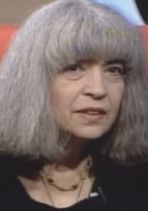
The psychologist and psychoanalyst Irena Talaban (Talaban Andrucovici; Talaban Lelong) was born in Craiova, in southwestern Romania. She completed her psychology degree at the University of Bucharest in 1974 and subsequently worked as a clinical psychologist until 1989 in the psychiatric department of Berceni Hospital and at the “Dr. Gheorghe Marinescu” Psychiatric Hospital in Bucharest. Like Vera Şandor, she underwent analysis with Eugen Papadima, who clandestinely maintained psychoanalytic training in communist Romania during the 1970s and 1980s. In 1990, she was among the founding members of the Romanian Psychoanalytic Society [Societatea Psihanalitica Româna] (SPR), which became a component society of the IPA in 2017 as the Societatea Română de Psihanaliză (SRP).
In 1990, she moved to France, where she studied clinical psychology and psychopathology at the University of Paris 8, simultaneously specialising in ethnopsychiatry. In 1998, she completed her PhD under Tobie Nathan with a dissertation on the "Pitești Experiment," a program conducted by the Securitate aimed at the "re-education" of political opponents through torture in the Pitești prison. Her dissertation was published in 1999 under the title Terreur communiste et resistance culturelle. Les arracheurs de masques.
Irena Talaban works as a psychotherapist in Lille at the counseling centers "Antonin Artaud" and "Alfred Binet." She teaches at the Faculty of Psychology at the Université Catholique de Lille and is part of the teaching staff at the ethnopsychiatric “Centre Georges Devereux” in Paris. She is also a member of the psychoanalytic association Bibliothèque freudienne de Lille. In addition to her psychological and psychoanalytical articles in academic journals, she has published short prose and essays in various Romanian literary magazines and is a member of the Uniunea Scriitorilor din România. (Top of the article)
- SELECTED WORKS
- "Le Christ s'est arrêté à Pitesti". Psychologie et psychopathologie du traumatisme individuel et collectif dans une société totalitaire communiste: La Roumanie communiste, 1945-1989. Phil. Diss. Paris 1998
- Terreur communiste et resistance culturelle. Les arracheurs de masques. Paris 1999 [Teroare comunistă şi rezistenţă culturală. Experimentul Piteşti. Bukarest 2007]
- Ancêtres, enfants et psychothérapeutes en l'an de grâce 1999. In Tobie Nathan et al.: L'enfant ancêtre. Paris 2000
- Marturisirile unui psihanalist. Pitesti 2005
- Ondine. Rom J Psychoanal 2, 2009, 186-215
- L'inconscient freudien dans le monde contemporain. Rom J Psychoanal 4 (1), 2011, 139-162
- Le contre-transfert du psychanalyste et la croyance du patient. Séquences cliniques. Rom J Psychoanal 5 (2), 2012, 165-190
- La bouillie des noms. Rom J Psychoanal 6B (2), 2013, 145-180
- Les trois rêves de Samuela. Rom J Psychoanal 7 (2), 2014, 163-186
- Une psychothérapie ethnopsychanalytique. Zayna. Rom J Psychoanal 9 (2), 2016, 181-205
- Adolescent crisis and the construction of identity. A Portuguese history. Rom J Psychoanal 10 (2), 2017, 87-110
- The encounter with the “favourite patient”. Rom J Psychoanal 12 (1), 2019, 101-128
- REFERENCES
- Georgescu, Matei: De la psihanaliză la etnopsihanaliză. Interview mit Irena Talaban (2013). TVH 2.0 (2023-04-04)
- Georgescu, Matei: Interview with Irena Talaban (2016). TVH (2023-04-05)
- Referatele (2023-04-04)
- SRP: Conferențiari 2025 (2025-05-09)
- Tudose, Cătălina, and Florin Tudose: The history of psychotherapy in Rumania during the socialist dictatorship of Nicolae Ceauşescu. European Journal of Mental Health 7, 2012, 221–235 (2024-09-10)
- PHOTO: Still from M. Georgescu: Interview with Irena Talaban (2013). TVH 2.0 (2023-04-04)
Frieda Teller (1889-1942)
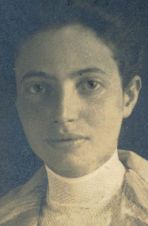
Frieda (also: Frida) Teller was born in Prague, the daughter of Jewish bookseller Wilhelm Teller and his wife Lucie, née Abeles. After completing her secondary education at the German Mädchen-Lyceum in Prague, she attended the Faculty of Philosophy at Charles University in Prague as a non-degree student from 1908 to 1913, taking courses in Literary Studies, Art History, and Musicology.
Beginning in 1914, she regularly wrote reviews for the literary journal Euphorion. In 1917, her widely cited article Musikgenuß und Phantasie was published in the psychoanalytic journal Imago, in which she explored the relationship between music and the psyche using the examples of Goethe and Jean Paul. Frieda Teller argued that music overcomes psychic censorship and is able to stimulate the formation of pleasurable erotic phantasies. Music, therefore, represents a mode of expression for repressed psychic material, comparable to dreams, parapraxes, and neurotic symptoms.
In 1920, while living in Prague, Frieda Teller became a full member of the Wiener Psychoanalytische Vereinigung (WPV). During the 1920s, she gave numerous lectures, including Die Wechselbeziehung von psychischem Konflikt und körperlichem Leiden bei Schiller (1920), Psychoanalytische Beobachtungen bei Schiller (1921), Übertragungen in der Analyse (1923) und Libidoentwicklung und Artumwandlung (1925). In her pathographic studies of Friedrich Schiller, she emphasised that his artistic work of sublimation had failed, and that only through the compromise symptom of his fatal illness was he able to both assert and defend against unconscious libidinal impulses.
In December 1926, Frieda Teller resigned from the WPV. Since her work often referenced Otto Rank, her departure may have been related to the rupture between Rank and Sigmund Freud. It remains unclear whether she was in contact with the Prague Psychoanalytic Study Group in the 1930s or whether she was still practicing as a psychoanalyst.
In September 1942, Frieda Teller was deported from Prague to Theresienstadt, and later that same month to the extermination camp Maly Trostinec, where she was murdered. (Top of the article)
- SELECTED WORKS
- Rezension von Werner Hilbert: Die Musikästhetik der Frühromantik (1911). Euphorion 22, 1915, 141-155
- Ein Beitrag zur Psychologie des Musikhörens. Neue Musik-Zeitung 38, 1917, 290-292
- Musikgenuß und Phantasie. Imago 5 (1), 1917, 8-15 + in B. Oberhoff (ed.): Psychoanalyse und Musik. Eine Bestandsaufnahme. Gießen 2002, 47-56
- Grillparzers Ahnen in seinen Dichtungen. Neue Jahrbücher für das klassische Altertum, Geschichte und deutsche Literatur und für Pädagogik. I. Abteilung, 1920, 225-237
- Rezension von Hermann Behme: Heinrich von Kleist und G. M. Wieland (1914). Euphorion 1920, 136-141
- Die Wechselbeziehungen von psychischem Konflikt und körperlichem Leiden bei Schiller. Imago 7 (2), 1921, 95-126
- Übertragungen in der Analyse. Vortrag WPV, 14.2.1923
- Libidotheorie und Artumwandlung. Imago 11 (1/2), 1925, 335-345
- REFERENCES
- Geni (2021-09-16)
- Giefer, Michael: Die Entwicklung der Psychoanalyse in der Tschechoslowakei von den Anfängen bis 1939. Luzifer-Amor 34 (68), 2021, 7-26
- Institut Terezinské initiativy: holocaust.cz (2021-09-16)
- Mühlleitner, Elke: Biographisches Lexikon der Psychoanalyse. Tübingen 1992
- Mühlleitner, Elke: Teller, Frida. In B. Keintzel and I. Korotin (eds): Wissenschaftlerinnen in und aus Österreich. Leben - Werk - Wirken. Wien u. a. 2002, 732-734
- Müller, Thomas: Von Charlottenburg zum Central Park West. Henry Lowenfeld und die Psychoanalyse in Berlin, Prag, New York. Frankfurt/M. 2000
- PHOTO: Národní archiv, Policejní ředitelství Praha II – všeobecná spisovna, 1921 – 1930, sign. T 289/9, kart. 3743
Millija Vosviniek (1903-1933)
The neurologist Millija "Milly" Vosviniek was born in Latvia, where she became the first and most well-known representative of psychoanalysis in the 1920s and 1930s. She received her psychoanalytic training at the Berlin Psychoanalytic Institute, and it is likely that the Riga-born Felix Boehm was her training analyst. She took part in the meetings, courses, seminars, and lecture evenings organised by the psychoanalytic societies in Berlin and Vienna, before returning to Latvia.
In Riga, Millija Vosviniek opened a psychoanalytic practice and gave lectures for teachers on psychoanalysis and psychoanalytic education, as well as radio talks aimed at a broader audience. Like the Swiss psychoanalyst Ernst Schneider, who taught at the University of Riga in the 1920s, she contributed to the growing interest in Sigmund Freud’s ideas in Latvia during that time. One of her key topics was the relationship between character traits and physique. Before she could obtain membership in the Berliner Psychoanalytische Vereinigung, she died of rapidly progressing tuberculosis at the age of thirty. (Top of the article)
- SELECTED WORKS
- Kādas slimības ir ārstējamas ar psihoanalīzi? Jaunākās Ziņas Nr. 47, 1930 + in Igors Šuvajevs: Psihoanalīzes pēdas Latvijā. Rīga 2012, 150f
- Freuda psihoanalītiskā metode. Domas Nr. 8, 1931, 617-622 + in Igors Šuvajevs: Psihoanalīzes pēdas Latvijā. Rīga 2012, 151-157
- REFERENCES
- Drillis, Rūdolfs: Latviešu praktiskās psīcholoģijas 30 gadi. In Amerikas Latviešu Humanitāro Zinātņu Asociācijas. Rakstu Krājums 1. Ed. by Jānis Siliņš. New York 1957, 98-114
- Reņģe, Viesturs: Latvijas psiholoģijas uzplaukums un noriets Baltijas kontekstā 20. gs. pirmajā pusē [Rise and fall of Latvian psychology at the beginning of the 20th century in the context of Baltics]. Scientific Papers University of Latvia 786: Psychology. 2013, 8-20 (2018-11-20)
- Šugar, Nikola: Milly Vosviniek. IZP 20 (2), 1934, 278
- Šuvajevs, Igors: Psihoanalīzes pēdas Latvijā. Riga 2012
- Zigmunde, Alida: Der Psychoanalytiker und Pädagoge Ernst Schneider (1878-1957) im Widerstreit der Meinungen seiner Zeitgenossen in Lettland (1920-1928). Humanitārās un Sociālās Zinātnes Nr. 27, 2017, 80-92
Katarzyna Walewska née Longchamps de Bérier (*1949)

The Polish psychoanalyst Katarzyna Walewska was born in Wrocław, the daughter of the lawyer Franciszek Longchamps de Bérier and Leonilla Siemieńska. She studied psychology in Warsaw and Wrocław. Her interest in psychoanalysis was sparked in the early 1970s while working at the Ośrodek Psychoterapii in Rasztów near Warsaw, the first psychoanalytically oriented psychotherapy center in Poland. An internship at the Centre familial des Jeunes in Vitry near Paris, where the Polish psychiatrist Stanislaw Tomkiewicz worked with delinquent and psychotic youth, further reinforced her professional calling.
She began a training analysis with Jan Malewski in Warsaw, which she continued in 1976 in Paris with Monique Cournut at the Société Psychanalytique de Paris (SPP), graduating in 1989. In the same year, she became a direct member of the International Psychoanalytical Association (IPA). In 1991, she founded the Instytut Psychoanalizy i Psychoterapii (IPP), where she served for many years as president. Walewska is a member of the SPP and the Polish Psychoanalytical Society [Polskie Towarzystwo Psychoanalityczne], founded in 1997. She is a training analyst and supervisor at the IPP and editor-in-chief of Dialogi, the institute’s journal, published since 1996. In 2000, she received her PhD from the University of Wrocław with a dissertation on the psychoanalytic treatment of depression. From 2004 to 2014, she taught psychoanalysis at the Faculty of Psychology, University of Warsaw.
Katarzyna Walewska developed an analytic psychodrama technique by using a piano in work with children, which she presented at the 2009 IPA Congress in Chicago: The presence of a piano allows the verbal analytic dialogue to be expanded by non-verbal dialogue, creating a supplementary, partly conscious and partly unconscious space, in which a libidinal dialogue circulates that is both narcissistic and objectal but also preverbal.
In her recently published book Progi Narodzin, she offers an overview of various psychoanalytic theories, with a particular emphasis on French approaches, and their implementation in clinical practice. The book also includes her essay Terapia psychoanalityczna w Polsce on the history of psychoanalysis in Poland.
Katarzyna Walewska was first married to the physicist Michał Nawrocki (1943-2018), and later to Andrzej Walewski (*1947). (Top of the article)
- SELECTED WORKS
- Analityczna terapia depresji. Koncepcja człowieka pozbawionego. Phil. Diss. Uniwersytet Wroclawski 2000
- Interpretacja marzen sennych po stu latach w pracy analitycznej. Dialogi Nr. 1-2, 2002
- Uwagi na temat techniki psychoanalitycznej. Dialogi Nr. 1-2, 2002, 6-13
- Analityk wobec traumy incestu. Dialogi Nr. 3-4, 2003
- Rozwiazanie psychotyczne. Dialogi Nr. 1-2, 2004
- Brève histoire de la psychanalyse en Pologne. Les Lettres de la Société de Psychanalyse Freudienne Nr. 14, 2005
- (ed.) Dziecko w terapii. Warschau 2008
- Pomiedzy kozetka a pianinem. In K. Walewska (ed.): Dziecko w terapii. Warschau 2008
- Sometimes, are we not also child therapists. In E. Pisula and P. Tomaszewski (eds): New Ideas in Studying and Supporting the Development of Exceptional People. Warschau 2009, 91-109
- Progi Narodzin. Rola teorii w pracy psychoanalitycznej. Krakau 2011
- Terapia psychoanalityczna w Polsce (2008). In K. Walewska: Progi Narodzin. Krakau 2011
- Entre le divan et le piano, un "psychodrame analytique". RFP 76 (2), 2012, 545-554
- Working with infantile fanaticism syndrome. Archives of Psychiatry and Psychotherapy 14 (3), 2012, 59-66
- (and Jerzy Pawlik) (eds) Depresja - ujecie psychoanalityczne. Warschau 1992
- REFERENCES
- Pawlak, Krzysztof, Zbigniew Sokolik et al.: Poland. In P. Kutter (ed.): Psychoanalysis International, Bd.1: Europe. Stuttgart-Bad 1992, 243-250
- Sedlak, Victor, et al.: The development of psychoanalysis in Poland. EPF Bulletin 50, 1997
- Sejm-Wielki (2023-03-07)
- Vincent, Michel: Pologne. In Dictionnaire international de la psychanalyse (2002). Ed. by A. de Mijolla. Paris 2005, 1305-1307 [International Dictionary of Psychoanalysis. Detroit et al. 2005, 1291-1293]
- Wikipedia: Katarzyna Walewska; Franciszek Longchamps de Bérier; Michał Nawrocki (2025-05-12)
- Wywiad z dr Katarzyna Walewska [Interview]. IPP (2021-11-09)
- PHOTO: Uniwersytet Wrocławski (2024-09-12)